
Late Bloomers: The Power of Patience in a World Obsessed With Early Achievement
by
Rich Karlgaard
Published 15 Apr 2019
(New York: Cambridge University Press, 2000). The sunk-cost fallacy is: Daniel Friedman et al., “Searching for the Sunk Cost Fallacy,” Experimental Economics 10, no. 1 (2007): 79–104. opportunity cost: John W. Payne, James R. Bettman, and Mary Frances Luce, “When Time Is Money: Decision Behavior Under Opportunity-Cost Time Pressure,” Organizational Behavior and Human Decision Processes 66, no. 2 (1996): 131–52; Robert Kurzban et al., “An Opportunity Cost Model of Subjective Effort and Task Performance,” Behavioral and Brain Sciences 36, no. 6 (2013): 661–79. That’s how beholden we are to the sunk-cost fallacy: Interesting to note—and good for late bloomers—older adults are possibly less subject to the sunk-cost fallacy than younger adults: “Older adults were less likely than younger adults to commit the sunk-cost fallacy.”
…
That’s how beholden we are to the sunk-cost fallacy: Interesting to note—and good for late bloomers—older adults are possibly less subject to the sunk-cost fallacy than younger adults: “Older adults were less likely than younger adults to commit the sunk-cost fallacy.” JoNell Strough et al., “Are Older Adults Less Subject to the Sunk-Cost Fallacy Than Younger Adults?,” Psychological Science 19, no. 7 (2008): 650–52. “Assume that you have spent”: Hal R. Arkes and Peter Ayton, “The Sunk Cost and Concorde Effects: Are Humans Less Rational Than Lower Animals?,” Psychological Bulletin 125, no. 5 (1999): 591. “cognitive dissonance”: Dan Ariely in Stephen J.
…
We all possess cognitive biases that hinder our ability to abandon a miserable job or fruitless activity. These biases can best be defined through two economic concepts: the sunk-cost fallacy and opportunity cost. The first, sunk cost, deals with the past. Sunk cost is the money, time, or effort we’ve already put into a project or direction in life. The more and the longer we invest in something, the more difficult it is to let it go. The sunk-cost fallacy is when we tell ourselves that we can’t quit because of all the time or money we’ve already spent. The second economic concept is opportunity cost. Unlike sunk cost, this concept deals with the future.
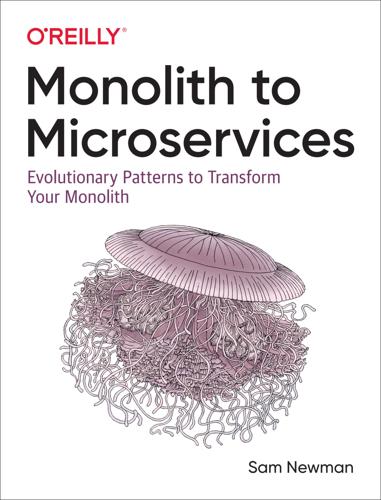
Monolith to Microservices: Evolutionary Patterns to Transform Your Monolith
by
Sam Newman
Published 14 Nov 2019
If they aren’t, you may need to do something about it. Ignoring what your people are telling you in favor of relying entirely on quantitative metrics is a great way to get yourself into a lot of trouble. Avoiding the Sunk Cost Fallacy You need to be aware of sunk cost fallacy, and having a review process is part of keeping you honest and, hopefully, helping you avoid this phenomenon. Sunk cost fallacy occurs when people become so invested in a previous approach to doing something that even if evidence shows the approach isn’t working, they’ll still proceed anyway. Sometimes we justify it to ourselves: “It’ll change any minute!”
…
Other times we may have excreted so much political capital within our organization to make a change that we can’t backpedal now. Either way, it’s certainly arguable that sunk cost fallacy is all about emotional investment: we’re so bought into an old way of thinking that we just can’t give it up. In my experience, the bigger the bet, and bigger the accompanying fanfare, the harder it is to pull out when it’s going wrong. Sunk cost fallacy is also known as the Concorde fallacy, named for the failed project backed at great expense by the British and French governments to build a supersonic passenger plane.
…
component-driven UIs, And mobile applications consistency (ACID transactions), ACID Transactions Constantine's law, On Coupling and Cohesion consumer-driven contracts (CDCs), Use consumer-driven contracts content-based router, using to intercept messaging calls, Content-based routing continuous delivery (CD), Deployment coupling Continuous Delivery (Humble and Farley), Deployment coupling contracts, Breaking Changesconsumer-driven, Use consumer-driven contracts one microservice exposing two contracts, Give consumers time to migrate Conway's law, Modeled Around a Business Domain copying code from the monolith, Cut, Copy, or Reimplement? core competency, teams structured around, Shifting Structures correlation IDs (CIDs), Choreographed sagas, Tracing costsavoiding the sunk cost fallacy, Avoiding the Sunk Cost Fallacy cost-effective scaling for load, Scale Cost-Effectively for Load of change, Cost of Change-Easier Places to Experimenteasier places to experiment, Easier Places to Experiment reversible and irreversible decisions, Reversible and Irreversible Decisions couplingabout, Coupling and cohesion, balancing, On Coupling and Cohesion deployment, Deployment coupling domain, Domain coupling implementation, Implementation coupling temporal, Temporal coupling credentials, separate, for database access, The Database as a Public Contract credit derivative pricing, comparing using parallel run, Example: Comparing Credit Derivative Pricing culture (organizational)anchoring new approaches in the culture, Anchoring New Approaches in the Culture and adaptability to change or process improvements, Being Open to New Approaches customer-installed software, Customer-Installed and Managed Software D dark launching, parallel run pattern and, Dark Launching and Canary Releasing data consistency, As a Fallback Mechanismeventual consistency, Data Synchronization, Synchronizing the data in ACID transactions, ACID Transactions in move foreign key relationship to code pattern, Data Consistencycheck before deletion, Check before deletion deciding how to handle deletion, So how should we handle deletion?
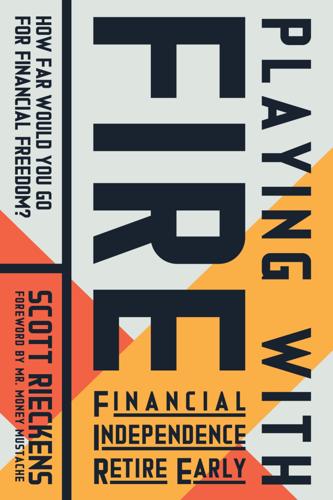
Playing With FIRE (Financial Independence Retire Early): How Far Would You Go for Financial Freedom?
by
Scott Rieckens
and
Mr. Money Mustache
Published 1 Jan 2019
Page 56, I used the “Latte Factor Calculator” created by Financial Mentor: “Latte Factor Calculator,” Financial Mentor, accessed August 29, 2018, https://financialmentor.com/calculator/latte-factor-calculator. Chapter 5: BMWs and Boat Clubs Page 62, Economists call this the “sunk cost fallacy”: “Sunk Cost Fallacy,” behavioraleconomics.com, accessed August 29, 2018, https://www .behavioraleconomics.com/resources/mini-encyclopedia-of-be /sunk-cost-fallacy. Page 68, As Mr. Money Mustache points out in his article “Top 10 Cars”: “Top 10 Cars for Smart People,” Mr. Money Mustache, March 19, 2012, https://www.mrmoneymustache.com/2012/03/19/top -10-cars-for-smart-people.
…
But with FIRE, every expense had to be put on the chopping block. The frustrating part was that I’d already sunk $6,000 to pay for the initial membership, which was a one-time cost in addition to the monthly fee. If I walked away from my membership, that was wasted money. Economists call this the “sunk cost fallacy.” Definition: The Sunk Cost Fallacy Beyond helping me recognize sunk costs, the FIRE framework provided a powerful decision point for any outlier purchase: Do I want this boat club, BMW, gym accessory, or drone, or do I want to be financially independent in ten years? Is this item or service a priority for my life and my happiness, and if so, is it more important than becoming financially independent within our target date?
…
It was a beautiful BMWS AND BOAT CLUBS The “sunk cost fallacy” is a common misconception for people new to the FIRE journey. People want to spend less on gas, but they don’t want to sell their gas-guzzling truck because of how much it has depreciated. Or people want to move to a smaller and cheaper apartment, but they refuse to move because they just bought new furniture that wouldn’t fit in a smaller apartment. Maybe you have a $200 jacket hanging in your closet that doesn’t fit you anymore, and you can’t bear to get rid of it because of how much you spent on it. The sunk cost fallacy is what happens when you assign value to an item based on money that you’ve already spent but that is not reflected in the item’s actual market value or what it will be worth in the future.
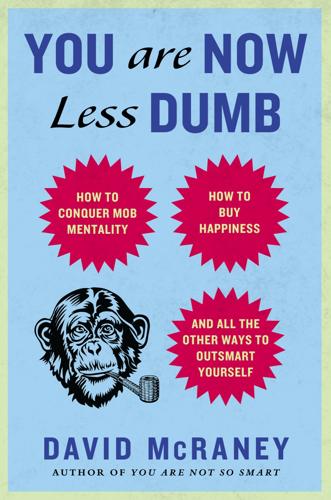
You Are Now Less Dumb: How to Conquer Mob Mentality, How to Buy Happiness, and All the Other Ways to Outsmart Yourself
by
David McRaney
Published 29 Jul 2013
If you’ve experienced a version of any of these, you’ve fallen victim to the sunk cost fallacy. Sunk costs are payments or investments that can never be recovered. An android with fully functioning logic circuits would never make a decision that took sunk costs into account, but you would. As an emotional human, your aversion to loss often leads you right into the sunk cost fallacy. A confirmed loss lingers and grows in your mind, becoming larger in your history than it was when you first felt it. Whenever this clinging to the past becomes a factor in making decisions about your future, you run the risk of being derailed by the sunk cost fallacy. Hal Arkes and Catherine Blumer created an experiment in 1985 that demonstrated your tendency to go fuzzy when sunk costs come along.
…
The Post Hoc Fallacy 5. The Halo Effect 6. Ego Depletion 7. The Misattribution of Arousal 8. The Illusion of External Agency 9. The Backfire Effect 10. Pluralistic Ignorance 11. The No True Scotsman Fallacy 12. The Illusion of Asymmetric Insight 13. Enclothed Cognition 14. Deindividuation 15. The Sunk Cost Fallacy 16. The Overjustification Effect 17. The Self-Enhancement Bias Acknowledgments Sources For Maggie. Thanks for helping me get out of that swamp. Introduction Self-Delusion THE MISCONCEPTION: You are a being of logic and reason. THE TRUTH: You are a being capable of logic and reason who falls short of that ideal in predictable ways.
…
Many psychologists would explain the Benjamin Franklin effect through the lens of cognitive dissonance, a giant theory made up of thousands of studies that have pinned down a menagerie of mental stumbling blocks—including the ones discussed in this book, such as confirmation bias, hindsight bias, the backfire effect, and the sunk cost fallacy—but as a general theory it describes something you experience every day. Sometimes you can’t find a logical, moral, or socially acceptable explanation for your actions. Sometimes your behavior runs counter to the expectations of your culture, your social group, your family, or even the person you believe yourself to be.
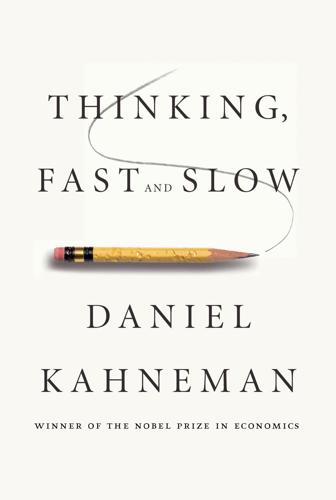
Thinking, Fast and Slow
by
Daniel Kahneman
Published 24 Oct 2011
They do know that she does not carry the same mental accounts and is therefore better able to ignore the sunk costs of past investments in evaluating current opportunities. The sunk-cost fallacy keeps people for too long in poor jobs, unhappy marriages, and unpromising research projects. I have often observed young scientists struggling to salvage a doomed project when they would be better advised to drop it and start a new one. Fortunately, research suggests that at least in some contexts the fallacy can be overcome. The sunk-cost fallacy is identified and taught as a mistake in both economics and business courses, apparently to good effect: there is evidence that graduate students in these fields are more willing than others to walk away from a failing project.
…
But nobody pressed me and there was no discussion; we tacitly agreed to go on without an explicit forecast of how long the effort would last. This was easy to do because we had not made such a forecast to begin with. If we had had a reasonable baseline prediction when we started, we would not have gone into it, but we had already invested a great deal of effort—an instance of the sunk-cost fallacy, which we will look at more closely in the next part of the book. It would have been embarrassing for us—especially for me—to give up at that point, and there seemed to be no immediate reason to do so. It is easier to change directions in a crisis, but this was not a crisis, only some new facts about people we did not know.
…
What would be your baseline prediction? How many of these cases succeed in court? How many settle? What are the amounts? Is the case we are discussing stronger or weaker than similar claims?” “We are making an additional investment because we do not want to admit failure. This is an instance of the sunk-cost fallacy.” The Engine of Capitalism The planning fallacy is only one of the manifestations of a pervasive optimistic bias. sid to adtions of aMost of us view the world as more benign than it really is, our own attributes as more favorable than they truly are, and the goals we adopt as more achievable than they are likely to be.
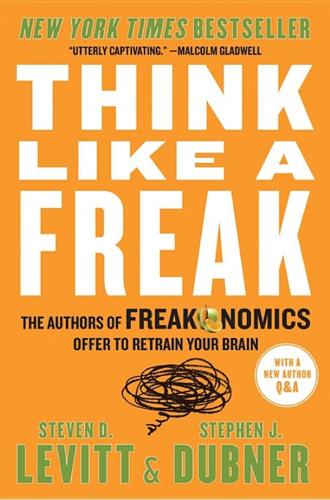
Think Like a Freak
by
Steven D. Levitt
and
Stephen J. Dubner
Published 11 May 2014
Keep the insults to yourself . . . Why you should tell stories . . . Is eating fat really so bad? . . . The Encyclopedia of Ethical Failure . . . What is the Bible “about”? . . . The Ten Commandments versus The Brady Bunch. 9. The Upside of Quitting Winston Churchill was right—and wrong . . . The sunk-cost fallacy and opportunity cost . . . You can’t solve tomorrow’s problem if you won’t abandon today’s dud . . . Celebrating failure with a party and cake . . . Why the flagship Chinese store did not open on time . . . Were the Challenger’s O-rings bound to fail? . . . Learn how you might fail without going to the trouble of failing . . .
…
The first is a lifetime of being told by Churchill wannabes that quitting is a sign of failure. The second is the notion of sunk costs. This is pretty much what it sounds like: the time or money or sweat equity you’ve already spent on a project. It is tempting to believe that once you’re invested heavily in something, it is counterproductive to quit. This is known as the sunk-cost fallacy or, as the biologist Richard Dawkins called it, the Concorde fallacy, after the supersonic airplane. Its two patrons, the British and French governments, suspected the Concorde was not economically viable but had spent too many billions to stop. In simpler times, this was known as throwing good money after bad—but money is hardly the only resource that people toss into the sunk-cost trap.
…
This suggests one way to make a premortem even more useful: offer anonymity. It seems safe to say that failure is not necessarily the enemy of success, as long as it’s given its due. But what about quitting outright? It’s all well and good for us to preach the upside of quitting, to point out opportunity cost and the sunk-cost fallacy. But is there any actual evidence that quitting leads to better outcomes? Carsten Wrosch, a psychology professor at Concordia University, helped run a series of small studies to see what happens when people give up “unattainable” goals. Granted, deciding whether a goal is unattainable is probably 90 percent of the battle.
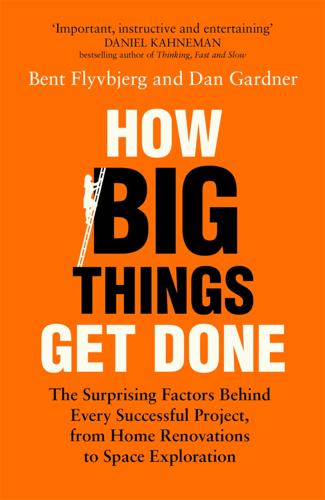
How Big Things Get Done: The Surprising Factors Behind Every Successful Project, From Home Renovations to Space Exploration
by
Bent Flyvbjerg
and
Dan Gardner
Published 16 Feb 2023
Why people spiral downward this way is an immensely important question that psychologists, economists, political scientists, and sociologists have studied for decades. A 2012 meta-analysis of the literature included 120 citations even after excluding the many non-quantitative analyses.34 Not surprisingly, there is no simple explanation. But one element that is central to any account is the “sunk cost fallacy.” Money, time, and effort previously spent to advance a project are lost in the past. You can’t get them back. They are “sunk.” Logically, when you decide whether to pour more resources into a project, you should consider only whether doing so makes sense now. Sunk costs should not be a factor in your thinking—but they probably will be because most people find it incredibly hard to push them out of their minds.
…
The higher the price the friends paid for the tickets—their sunk costs—the more likely they are to brave the blizzard and attempt driving to the game, investing more time, money, and risk. In contrast, the rational approach would be to disregard what they have already invested and stay home. The sunk-cost fallacy applies to individuals, groups, and whole organizations.35 “Driving into the blizzard” is particularly common in politics. Sometimes that’s because politicians themselves fall for it. But even politicians who know better understand that the public is likely to be swayed by sunk costs, so sticking with a fallacy is politically safer than making a logical decision.
…
As a result, the state’s taxpayers were led to continue to escalate their commitment and spend billions more on a shrunken version of the project they would never have approved had it been put before them in the first place. I expect that California’s “bullet train to nowhere” will one day be the standard textbook illustration of the sunk-cost fallacy and escalation of commitment. SOMERVELL’S SPIRAL We can’t know for sure which force—psychology or politics—led Brehon Somervell to rush the planning of the Pentagon. But as usual with big projects, there’s reason to think that both played a role. Like Willie Brown, Somervell was politically astute.
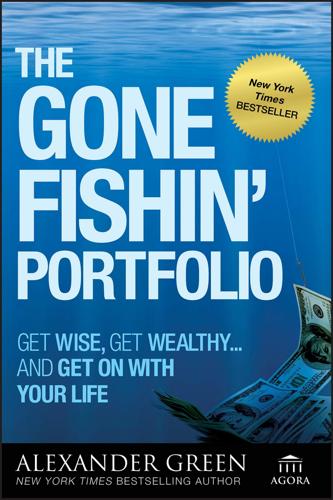
The Gone Fishin' Portfolio: Get Wise, Get Wealthy...and Get on With Your Life
by
Alexander Green
Published 15 Sep 2008
But, according to Shermer, mental accounting makes us reluctant to make the effort to save money when the relative amount we’re dealing with is small. Or take the sunk-cost fallacy. Objectively, a company with lousy business prospects is not worth holding, no matter what you paid for it. Yet many investors will hold on to a losing stock for years, even when it’s clearly unprofitable. Shermer correctly points out, “Rationally, we should just compute the odds of succeeding from this point forward.” Yet investors who have sunk a lot into a stock—including a fair amount of ego—have trouble doing this. Mental accounting and the sunk-cost fallacy are just the tip of the iceberg. Shermer shows that consumers and investors also fall prey to cognitive dissonance, hindsight bias, self-justification, inattentional blindness, confirmation bias, the introspection illusion, the availability fallacy, self-serving bias, the representative fallacy, the law of small numbers, attribution bias, the low aversion effect, framing effects, the anchoring fallacy, the endowment effect, and blind spot bias.
…
(money manager performance research) Social pressure, impact Social Security income source maintenance problems SPDR DJ Wilshire Total Market ETF Spending, tracking Standard & Poor’s(S&P) decline outperformance performance portfolio, comparison Stein, Ben Stock market fluctuation growth, hypothesis increase investing performance volatility Stocks investment returns, superiority volatility Stocks for the Long Run (Siegel) Style drift Sunk-cost fallacy Swenson, David (investment research) Take On the Street (Levitt) Taxes liabilities payment reduction Taxes in the Mutual Fund Industry (Lipper study) Tax-managed portfolio, impact Templeton, John advice Templeton Growth Fund Total nominal return indices Total returns, average Treasuries, taxable income Treasury bills, returns Treasury Inflation-Protected Securities (TIPS) tax inefficiency Trust fund Uncertainty, elimination U.S. large-cap stocks U.S. multinational firms, international exposure U.S. small-cap stocks U.S. stocks allocation short-term corporate bonds, relationship Value Line Fund, market lag Vanguard Emerging Markets ETF description holdings Vanguard Emerging Markets Stock Index Fund description expenses holdings investment policy management minimums risk attributes Vanguard European ETF description holdings Vanguard European Stock Index Fund description expenses holdings investment policy management minimums risk attributes Vanguard funds Vanguard Gold and Precious Metals Fund, closure reasons Vanguard Group costs, reduction expense ratio fees funds ownership mutual funds, usage no-load characteristic Vanguard High-Yield Corporate Fund description expenses holdings investment policy management minimums risk attributes Vanguard Inflation-Protected Securities Fund description expenses holdings investment policy management minimums Vanguard Inflation-Protected Securities Fund, investment Vanguard Intermediate-term Tax-Exempt Investor Shares, investment Vanguard Pacific ETF description holdings Vanguard Pacific Stock Index Fund description expenses holdings investment policy management minimums risk attributes Vanguard Precious Metals and Mining Fund description expenses holdings investment policy management minimums risk attributes Vanguard REIT ETF description holdings Vanguard REIT Index Fund description expenses holdings investment policy management minimums risk attributes Vanguard Short-Term Corporate Bond Fund, purchase (avoidance) Vanguard Short-Term Investment Grade Fund description expenses holdings investment policy management minimums risk attributes Vanguard Small-Cap ETF description holdings Vanguard Small-Cap Index Fund description expenses holdings investment policy management minimums risk attributes Vanguard Total Bond Market ETF description holdings Vanguard Total Stock Market ETF description holdings Vanguard Total Stock Market Index Fund description expenses growth holdings investment policy management minimums performance redeeming risk attributes Volatility, elimination Wealth, accumulation Wealth Without Risk (Givens) Wellington Management Company What Wall Street Doesn’t Want You to Know (Swedroe) Yale Endowment, investment system 1 “Vanguard” is a trademark of The Vanguard Group, Inc. © 2008 The Vanguard Group, Inc.
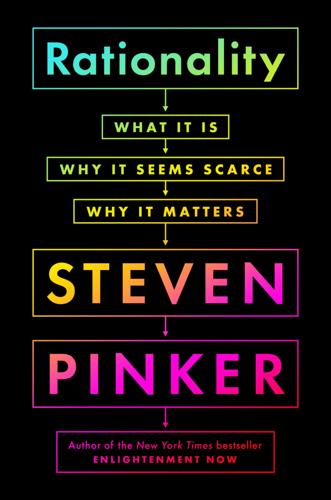
Rationality: What It Is, Why It Seems Scarce, Why It Matters
by
Steven Pinker
Published 14 Oct 2021
It’s captured in the saying “Don’t throw good money after bad” and in the First Law of Holes: “When you’re in one, stop digging.” One of the most commonly cited human irrationalities is the sunk-cost fallacy, in which people continue to invest in a losing venture because of what they have invested so far rather than in anticipation of what they will gain going forward. Holding on to a tanking stock, sitting through a boring movie, finishing a tedious novel, and staying in a bad marriage are familiar examples. It’s possible that people fall prey to the sunk-cost fallacy as a spillover from playing Escalation (and Chicken), where a reputation for standing one’s ground, no matter how costly, could convince the other player to back down first.
…
They include long-running labor strikes, dueling lawsuits, and literal wars of attrition, in which each nation feeds men and matériel into the maw of the war machine hoping the other side will exhaust itself first.14 The common rationale is “We fight so that our boys will not have died in vain,” a textbook example of the sunk-cost fallacy but also a tactic in the pathetic quest for a Pyrrhic victory. Many of the bloodiest wars in history were wars of attrition, showing once again how the infuriating logic of game theory may explain some of the tragedies of the human condition.15 Though persisting with a certain probability may be the least bad option once one is trapped in an Escalation Game, the truly rational strategy is not to play in the first place.
…
See availability heuristic intransitivity, 176, 185–88 irrelevant alternatives, sensitivity to, 177–78, 188–92, 350n8 loss aversion, 192–94 mañana fallacy, 101 Meadow’s fallacy (multiplying probabilities of interdependent events), 129–30, 131 money pump, 176, 180, 185, 187–88 monocausal fallacy, 260, 272–73 motte-and-bailey tactic (moving the goalposts), 88 moving the goalposts (motte-and-bailey), 88 myopic temporal discounting, 52–56, 54 myside bias, 294–96, 297, 312–13, 316, 317, 357n73 mythology mindset, 301–9 no true Scotsman fallacy, 88 openness to evidence, lack of, 310–11, 356–57n67 outrage, communal, 123–27 overconfidence, 20, 29–30, 33, 115, 216, 255, 323 paradoxical tactics, 58–62 paradox of the heap, 101 post hoc probability, 141–48, 160, 321 preference reversal, 52–53, 55 probability neglect, 11, 28, 321 propensity confused with probability, 21–22, 118, 139–40, 198, 216 prosecutor’s fallacy, 140–41 questionable research practices, 145–46, 160 regression to the mean, unawareness of, 254–56, 320, 353n13 regret avoidance, 17, 190 representativeness heuristic, 27, 155–56 resistance to evidence. See openness to evidence, lack of selective exposure, 290–91 sexism, 19–20 slippery slope fallacy, 100–101 so-what-you’re-saying-is, 88 special pleading, 88 stereotyping, 99–100, 108–09. See also representativeness straw man, 88, 291 sunk cost fallacy, 237–38, 320, 323 System 1 thinking. See cognitive reflection, lack of taboos, 62, 124, 166. See also forbidden base rates; heretical counterfactuals; taboo tradeoffs taboo tradeoffs, 62–64, 184, 350n15 Texas sharpshooter fallacy, 142–46, 160, 321 Tragedy of the Rationality Commons, 298, 315–17 tu quoque (what-aboutery), 89 unreflective thinking, 8–10, 311 virtus dormitiva, 11–12, 53, 89 what-aboutery (tu quoque), 89 Winner’s Curse, 256 A B C D E F G H I J K L M N O P Q R S T U V W X Y Z A B C D E F G H I J K L M N O P Q R S T U V W X Y Z INDEX The page numbers in this index refer to the printed version of this book.

Logically Fallacious: The Ultimate Collection of Over 300 Logical Fallacies (Academic Edition)
by
Bo Bennett
Published 29 May 2017
Contents Preface Introduction Reasoning Arguments Beliefs Fallacies On Reason and Rationality Collecting Fallacies Being a Smart-Ass Format and Style of this Book The Fallacies Accident Fallacy Ad Fidentia Ad Hoc Rescue Ad Hominem (Abusive) Ad Hominem (Circumstantial) Ad Hominem (Guilt by Association) Ad Hominem (Tu quoque) Affirmative Conclusion from a Negative Premise Affirming a Disjunct Affirming the Consequent Alleged Certainty Alternative Advance Appeal to Accomplishment Appeal to Anger Appeal to Authority Appeal to Celebrity Appeal to Common Belief Appeal to Common Folk Appeal to Coincidence Appeal to Consequences Appeal to Definition* Appeal to Desperation Appeal to Emotion Appeal to Extremes Appeal to Faith Appeal to Fear Appeal to Flattery Appeal to Force Appeal to Heaven Appeal to the Moon Appeal to Nature Appeal to Novelty Appeal to Pity Appeal to Popularity Appeal to Possibility Appeal to Ridicule Appeal to Tradition Ambiguity Fallacy Anonymous Authority Argument by Emotive Language Argument by Fast Talking Argument by Gibberish Argument by Personal Charm Argument by Repetition Argument from Age Argument from Fallacy Argument from Hearsay Argument from Ignorance Argument from Silence Argument of the Beard Argument to Moderation Avoiding the Issue Argument to the Purse Base Rate Fallacy Begging the Question Biased Sample Fallacy Blind Authority Fallacy Broken Window Fallacy Causal Reductionism Cherry Picking Circular Reasoning Commutation of Conditionals Complex Question Fallacy Conflicting Conditions Confusing an Explanation with an Excuse Conjunction Fallacy Conspiracy Theory Definist Fallacy Denying the Antecedent Denying a Conjunct Denying the Correlative Disjunction Fallacy Distinction Without a Difference Equivocation Etymological Fallacy Exclusive Premises Existential Fallacy Extended Analogy Failure to Elucidate Fallacy of Composition Fallacy of Division Fallacy of Four Terms Fallacy of Necessity Fallacy of (the) Undistributed Middle Fake Precision False Attribution False Conversion False Dilemma False Effect Far-Fetched Hypothesis Faulty Comparison Gambler’s Fallacy Genetic Fallacy God Wildcard Fallacy* Hasty Generalization Having Your Cake Hedging Historian’s Fallacy Homunculus Fallacy Hypnotic Bait and Switch Hypothesis Contrary to Fact If-By-Whiskey Illicit Contraposition Illicit Major Illicit Minor Illicit Substitution of Identicals Inconsistency Inflation of Conflict Jumping to Conclusions Just Because Fallacy* Just In Case Fallacy Least Plausible Hypothesis Limited Depth Limited Scope Logic Chopping Ludic Fallacy Lying with Statistics Magical Thinking Meaningless Question Misleading Vividness Missing Data Fallacy* Modal (Scope) Fallacy Moralistic Fallacy Moving the Goal Posts Multiple Comparisons Fallacy Naturalistic Fallacy Negative Conclusion from Affirmative Premises Negating Antecedent and Consequent Nirvana Fallacy No True Scotsman Non Sequitur Notable Effort Overwhelming Exception Package-Deal Fallacy Poisoning the Well Political Correctness Fallacy Post-Designation Prejudicial Language Proof by Intimidation Proving Non-Existence Quantifier-Shift Fallacy Quantum Physics Fallacy* Questionable Cause Rationalization Red Herring Reductio ad Absurdum Reductio ad Hitlerum Regression Fallacy Reification Relative Privation Retrogressive Causation Retrospective Determinism Scapegoating Selective Attention Self-Sealing Argument Shoehorning Slippery Slope Special Pleading Spiritual Fallacy* Spotlight Fallacy Statement of Conversion Stereotyping Stolen Concept Fallacy Strawman Fallacy Style Over Substance Subjectivist Fallacy Subverted Support Sunk-Cost Fallacy Suppressed Correlative Texas Sharpshooter Fallacy Tokenism Two Wrongs Make a Right Unfalsifiability Unwarranted Contrast Use-Mention Error Weak Analogy Willed Ignorance Wishful Thinking B-List Fallacies Abductive Fallacy Accent Fallacy (fallacy of prosody) Amazing Familiarity Ambiguity Effect Ambiguous Assertion Appeal to Closure (more specific form of argument from ignorance) Appeal to Coincidence Appeal to Complexity Appeal to Convenience Appeal to Luck (good or back luck) Appeal to Envy (Argumentum ad invidiam) Appeal to Equality Appeal to Intuition Appeal to Privacy Appeal to Stupidity Appeal to Utility Argument by Dismissal Argument by Laziness Argument by Pigheadedness Argument by Rhetorical Question Argument by Selective Reading Argument by Uniformed Opinion Argument from Design Argument from Inertia Argument from Omniscience Argument To The Future Argumentum ad Captandum Argumentum ad Exemplum (Argument to the Example) Barking Cat Big Lie Technique Blood is Thicker than Water (Favoritism) Bribery (Material Persuasion, Material Incentive, Financial Incentive) Burden of Proof Fallacy (onus probandi, shifting the) Chronological Snobbery Confesses Under Torture Contextomy Damning with Faint Praise Double Bind Double Standard Emphasis Fallacy Essentializing Fallacy Exaggeration Exception That Proves The Rule Failure to State Fallacy of Multiplication Fallacy of Opposition Fallacy of Quoting Out of Context Fallacy of the Crucial Experiment Fantasy Projection Faulty Sign Finish the Job Fallacy Galileo Wannabe Golden Hammer Fallacy Hifalutin' Denunciations I Wish I Had a Magic Wand In a Certain Respect and Simply Intentional Fallacy Invincible Ignorance Fallacy Knights and Knaves Lack of Proportion Latino Fallacy* Lies (Misrepresentation) Lip Service Lump of Labor Fallacy (Lump of Jobs Fallacy) Mind Projection Fallacy Monopolizing the Question Norm of Reciprocity Not Invented Here Outdated Information Packing the House Paralogism Paralysis of Analysis (Procrastination) Pigeonholing Pious Fraud Pragmatic Fallacy Preacher’s We Probabilistic Fallacy Psychologist's Fallacy Redefinition Reductionism Sanctioning the Devil Scope Fallacy Self-Deception Self-Fulfilling Prophecy Self-Righteousness Sherlock Holmes Fallacy Sly Suggestions Snow Job Sour Grapes Spin Doctoring Taboo Tautology There Is No Alternative Too Broad Too Narrow Undoability Weasel Wording Word Magic Top 25 Most Common Fallacies Bo's Original Fallacies About the Author Preface Several years back, while entering some kind of early-stage, intellectual, mid-life crisis, I became passionate about science, philosophy, and religion, which eventually led to my starting a debate website called DebateGod (http://www.debategod.org), as a way to help me understand how other people think, and come to the conclusions they do.
…
Exception: If the argument is preceded with a declaration that the phenomenon does occur, then what would be the subverted support is simply a reason given. The firmament, a tent-like structure that kept the “waters above” from flooding the earth as described in the Bible, once covered the earth. It is no longer there today because it was destroyed during Noah’s flood. Sunk-Cost Fallacy (also known as: concorde fallacy) Description: Reasoning that further investment is warranted on the fact that the resources already invested will be lost otherwise, not taking into consideration the overall losses involved in the further investment. Logical Form: X has already been invested in project Y.
…
Table of Contents eBook Cover Title Page Contents Preface Introduction Reasoning Arguments Beliefs Fallacies On Reason and Rationality Collecting Fallacies Being a Smart-Ass Format and Style of this Book Accident Fallacy Ad Fidentia Ad Hoc Rescue Ad Hominem (Abusive) Ad Hominem (Circumstantial) Ad Hominem (Guilt by Association) Ad Hominem (Tu quoque) Affirmative Conclusion from a Negative Premise Affirming a Disjunct Affirming the Consequent Alleged Certainty Alternative Advance Appeal to Accomplishment Appeal to Anger Appeal to Authority Appeal to Celebrity Appeal to Common Belief Appeal to Common Folk Appeal to Coincidence Appeal to Consequences Appeal to Definition* Appeal to Desperation Appeal to Emotion Appeal to Extremes Appeal to Faith Appeal to Fear Appeal to Flattery Appeal to Force Appeal to Heaven Appeal to the Moon Appeal to Nature Appeal to Novelty Appeal to Pity Appeal to Popularity Appeal to Possibility Appeal to Ridicule Appeal to Tradition Ambiguity Fallacy Anonymous Authority Argument by Emotive Language Argument by Fast Talking Argument by Gibberish Argument by Personal Charm Argument by Repetition Argument from Age Argument from Fallacy Argument from Hearsay Argument from Ignorance Argument from Silence Argument of the Beard Argument to Moderation Avoiding the Issue Argument to the Purse Base Rate Fallacy Begging the Question Biased Sample Fallacy Blind Authority Fallacy Broken Window Fallacy Causal Reductionism Cherry Picking Circular Reasoning Commutation of Conditionals Complex Question Fallacy Conflicting Conditions Confusing an Explanation with an Excuse Conjunction Fallacy Conspiracy Theory Definist Fallacy Denying the Antecedent Denying a Conjunct Denying the Correlative Disjunction Fallacy Distinction Without a Difference Equivocation Etymological Fallacy Exclusive Premises Existential Fallacy Extended Analogy Failure to Elucidate Fake Precision Fallacy of Composition Fallacy of Division Fallacy of Four Terms Fallacy of Necessity Fallacy of (the) Undistributed Middle False Attribution False Conversion False Dilemma False Effect Far-Fetched Hypothesis Faulty Comparison Gambler’s Fallacy Genetic Fallacy God Wildcard Fallacy* Hasty Generalization Having Your Cake Hedging Historian’s Fallacy Homunculus Fallacy Hypnotic Bait and Switch Hypothesis Contrary to Fact If-By-Whiskey Illicit Contraposition Illicit Major Illicit Minor Illicit Substitution of Identicals Inconsistency Inflation of Conflict Jumping to Conclusions Just Because Fallacy* Just In Case Fallacy Least Plausible Hypothesis Limited Depth Limited Scope Logic Chopping Ludic Fallacy Lying with Statistics Magical Thinking Meaningless Question Misleading Vividness Missing Data Fallacy* Modal (Scope) Fallacy Moralistic Fallacy Moving the Goal Posts Multiple Comparisons Fallacy Naturalistic Fallacy Negative Conclusion from Affirmative Premises Negating Antecedent and Consequent Nirvana Fallacy No True Scotsman Non Sequitur Notable Effort Overwhelming Exception Package-Deal Fallacy Poisoning the Well Political Correctness Fallacy Post-Designation Prejudicial Language Proof by Intimidation Proving Non-Existence Quantifier-Shift Fallacy Quantum Physics Fallacy* Questionable Cause Rationalization Red Herring Reductio ad Absurdum Reductio ad Hitlerum Regression Fallacy Reification Relative Privation Retrogressive Causation Retrospective Determinism Scapegoating Selective Attention Self-Sealing Argument Shoehorning Slippery Slope Special Pleading Spiritual Fallacy* Spotlight Fallacy Statement of Conversion Stereotyping Stolen Concept Fallacy Strawman Fallacy Style Over Substance Subjectivist Fallacy Subverted Support Sunk-Cost Fallacy Suppressed Correlative Texas Sharpshooter Fallacy Tokenism Two Wrongs Make a Right Unfalsifiability Unwarranted Contrast Use-Mention Error Weak Analogy Willed Ignorance Wishful Thinking B-List Fallacies Top 25 Most Common Fallacies Bo's Original Fallacies About the Author Footnotes
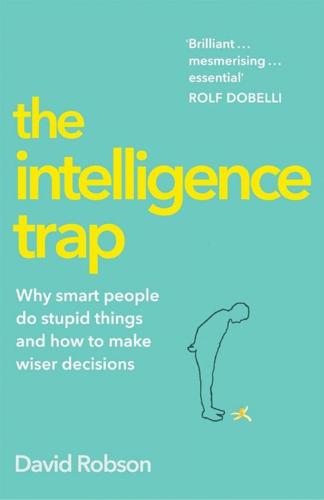
The Intelligence Trap: Revolutionise Your Thinking and Make Wiser Decisions
by
David Robson
Published 7 Mar 2019
The statements mean exactly the same thing, but people are more likely to endorse the statement when it is presented in the gain framing; they passively accept the facts as they are given to them without thinking what they really mean. Advertisers have long known this: it’s the reason that we are told that foods are 95 per cent fat free (rather than being told they are ‘5 per cent fat’). Other notable biases include the sunk cost fallacy (our reluctance to give up on a failing investment even if we will lose more trying to sustain it), and the gambler’s fallacy – the belief that if the roulette wheel has landed on black, it’s more likely the next time to land on red. The probability, of course, stays exactly the same. An extreme case of the gambler’s fallacy is said to have been observed in Monte Carlo in 1913, when the roulette wheel fell twenty-six times on black – and the visitors lost millions as the bets on red escalated.
…
Some initial answers come from the work of Wändi Bruine de Bruin at Leeds University. Inspired by Stanovich’s research, her team first designed their own scale of ‘adult decision-making competence’, consisting of seven tasks measuring biases like framing, measures of risk perception, and the tendency to fall for the sunk cost fallacy (whether you are likely to continue with a bad investment or not). The team also examined over-confidence by asking the subjects some general knowledge questions, and then asking them to gauge how sure they were that each answer was correct. Unlike many psychological studies, which tend to use university students as guinea pigs, Bruine de Bruin’s experiment examined a diverse sample of people, aged eighteen to eighty-eight, with a range of educational backgrounds – allowing her to be sure that any results reflected the population as a whole.
…
‘I must seem like an ostrich who forever buries its head in the relativistic sand in order not to face the evil quanta’, he once wrote to his friend, the quantum physicist Louis de Broglie. But he continued on his fool’s errand, and even on his deathbed, he scribbled pages of equations to support his erroneous theories, as the last embers of his genius faded. All of which sounds a lot like the sunk cost fallacy exacerbated by motivated reasoning. The same stubborn approach can be found in many of his other ideas. Having supported communism, he continually turned a blind eye to the failings of the USSR, for instance.51 Einstein, at least, had not left his domain of expertise. But this single-minded determination to prove oneself right may be particularly damaging when scientists stray outside their usual territory, a fact that was noted by the psychologist Hans Eysenck.
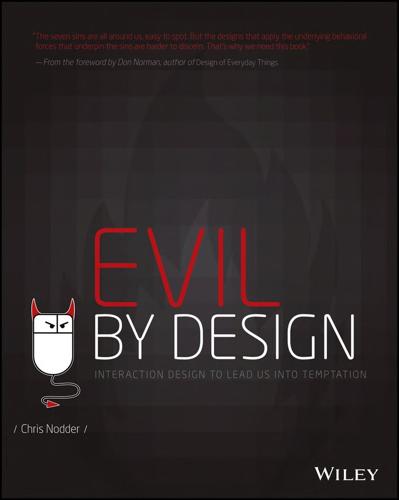
Evil by Design: Interaction Design to Lead Us Into Temptation
by
Chris Nodder
Published 4 Jun 2013
The cost has now outweighed any future benefit, but irrational escalation of commitment keeps you going because you feel you can still win and recoup some of your losses. You basically continue to bid because of how much you’ve already bid. This is the sunk cost fallacy. Augenblick collected data from six different penny auction sites and showed that auctions are less likely to end, and bidders are less likely to leave an auction as they make more bids. Both behaviors are indicative of sunk cost fallacy behavior, and both drive up the cost of the auctioned item. In the case of these penny auctions, irrational escalation of commitment is thankfully short-lived for most bidders.
…
Because each bid costs you money regardless of whether you eventually win the product, total expenditure on the site can easily be more than the retail value of the products you end up “winning.” A couple of interlinked psychological and economic principles are at work here: irrational escalation of commitment and the sunk cost fallacy (a form of loss aversion). You place a couple of bids on an auction in its later stages, and now you are in the game. Soon you realize that your 50-cent bids are raising the price by only 1 cent each time. You’ve spent quite a bit of money and bidding is still quite active, extending the time of the auction.
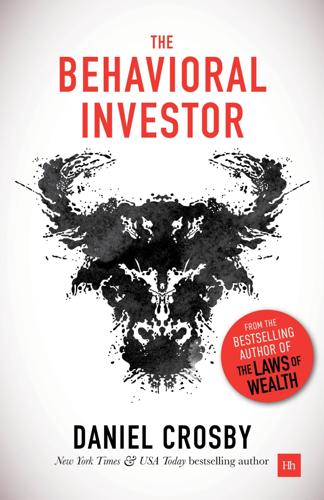
The Behavioral Investor
by
Daniel Crosby
Published 15 Feb 2018
Our tendency to overvalue physical objects under our care makes sense when considered in a certain light, but it also extends to the ways that we evaluate decisions on which we have spent time and money. In a cruel twist, the more time and attention we give a decision, the more warped our sense of what is right may become. This sunk cost fallacy, as it is known, means that the larger the past resource invested in a decision, the greater the inclination to continue the commitment in subsequent decisions. The member of a gym he has never once visited may not cancel his monthly membership fee because to do so would mean that the whole thing had been a waste.
…
The billion dollars spent on the Manhattan Project is viewed as contributing to Truman’s decision to use atomic weapons against Japan in World War II. Had the bombs not been used to end the war, the resources devoted to the project would likely have been viewed as wasted. While certainly not as consequential as the examples mentioned above, investment managers commonly fall prey to the sunk cost fallacy when making buy and sell decisions. Consider the seemingly reasonable impulse to want your investment manager to do in-person site visits with potential investment targets. For starters, you begin with a sort of optimism bias about the whole affair because no investor ever vetted a deal he didn’t believe to be worthwhile.
…
I can’t, I can’t, I can’t stand losing There are many paths to conservatism – avoidance of regret, privileging of what we own, the consideration of sunk costs – but all have an aversion to loss at their core. Regret aversion is fundamentally about avoiding the loss of perceived competence. The endowment effect is an evolutionary land grab designed to keep us from being taken advantage of. And the sunk cost fallacy is rooted in a fear of wasting time and resources. All paths to conservatism, it would seem, run through some form of loss aversion. It is perhaps the most widely disseminated finding of behavioral finance that our risk and reward preferences are asymmetrical and that we care far more about avoiding loss than we do about achieving gain.
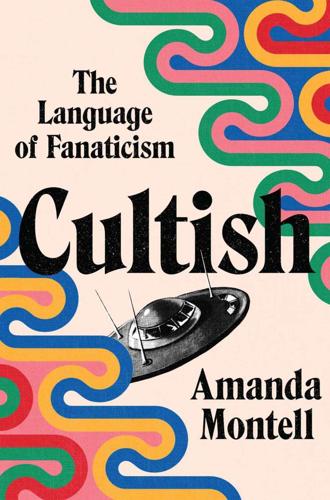
Cultish: The Language of Fanaticism
by
Amanda Montell
Published 14 Jun 2021
Irrationally, we tend to stay in negative situations, from crappy relationships to lousy investments to cults, telling ourselves that a win is just around the corner, so we don’t have to admit to ourselves that things just didn’t work out and we should cut our losses. It’s an emotional example of the sunk cost fallacy, or people’s tendency to think that resources already spent justify spending even more. We’ve been in it this long, we might as well keep going. As with confirmation bias, not even the smartest, most judicious people are immune to loss aversion. It’s deeply embedded. I’ve been in my fair share of toxic one-on-one relationships, and noticing the similarities between abusive partners and cultish leaders has been, to say the least, humbling.
…
As I continued to traverse Scientology’s Bridge to Total Freedom (the path to going clear), I’d come to learn about supernatural concepts like Xenu the galactic overlord and invisible “body thetans” (spirits of ancient aliens that cling to humans and cause destruction). It would have been lunacy. But I’d have to keep going. The sunk cost fallacy and loss aversion would tell me I can’t quit. Not this far in. Plus, my superiors would insist, if I leave right now in the middle of an upper level of auditing, I could pull in misfortune. I could pull in disease, even death. One ex-Scientologist named Margery Wakefield, a longtime officer in the OSA (Office of Special Affairs, Scientology’s “intelligence agency”), wrote about how she was off-loaded (kicked out) in the early ’80s for her perceived decline in mental state.
…
Confirmation bias allowed fans to interpret Choudhury’s blatant lies (he gloated about winning yoga competitions that never even took place) and statements of grandeur (“I don’t even sleep thirty hours a month,” “I’m the smartest man in the world you ever met,” “I’m the only friend you’ve had in your life”) as “childlike” rather than disturbed. The sunk cost fallacy told them he’d make their careers if they just attended one more training. During his hot yoga workshops, Choudhury’s pupils were known to pass out, suffer dehydration, and develop upper respiratory infections. Because they were conditioned to trust their beloved guru as all-knowing, they learned to disregard their own pain and gut instincts.

Super Thinking: The Big Book of Mental Models
by
Gabriel Weinberg
and
Lauren McCann
Published 17 Jun 2019
Similarly, by walking away after a sure but small gain, you may be missing out on a potentially better opportunity. When it comes to losses in particular, you need to acknowledge that they’ve already happened: you’ve already spent the resources on the project to date. When you allow these irrecoverable costs to cloud your decision making, you are falling victim to the sunk-cost fallacy. The costs of the project so far, including your time spent, have already been sunk. You can’t get them back. This can be a problem (fallacy) when these previous losses influence you to make a bad decision. An instance where sunk costs lead to an escalation of commitment is sometimes called the Concorde fallacy, named after the supersonic jet whose development program was plagued with prohibitive cost overruns and never came close to making a profit.
…
An instance where sunk costs lead to an escalation of commitment is sometimes called the Concorde fallacy, named after the supersonic jet whose development program was plagued with prohibitive cost overruns and never came close to making a profit. Ask yourself: Is my project like the Concorde? Am I throwing good money after bad when it is better to just walk away? Everyday sunk cost fallacy examples can run from less consequential decisions, such as finishing a movie or book that you don’t like, to larger ones, such as investing more money into a failing business or staying in a career or relationship that is turning sour. You need to avoid thinking, We’ve come too far to stop now.
…
Use the Pareto principle to find the 80/20 in any activity and increase your leverage at every turn. Recognize when you’ve hit diminishing returns and avoid negative returns. Use commitment and the default effect to avoid present bias, and periodic evaluations to avoid loss aversion and the sunk-cost fallacy. Look for shortcuts via existing design patterns, tools, or clever algorithms. Consider whether you can reframe the problem. 4 Becoming One with Nature BEFORE THE INDUSTRIAL REVOLUTION, most peppered moths in Manchester, England, were light-colored, using trees covered with pale bark and lichens as camouflage to avoid becoming prey for birds.
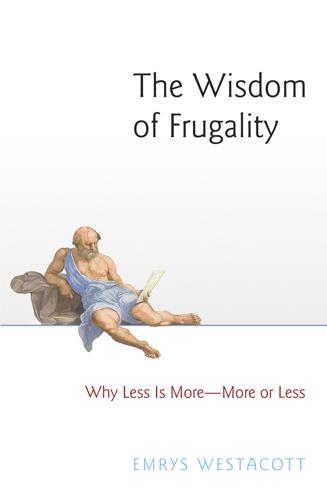
The Wisdom of Frugality: Why Less Is More - More or Less
by
Emrys Westacott
Published 14 Apr 2016
He won’t allow the first to reason about or examine anything except how a little money can be made into great wealth. And he won’t allow the second to value or admire anything but wealth and wealthy people or to have any ambition other than the acquisition of wealth or whatever might contribute to getting it.8 The “sunk cost” fallacy: Research by psychologists Daniel Kahneman and Amos Tversky in the 1970s led them to conclude that for most human beings a concern to avoid losses is a more powerful motivator than the desire to realize gains. Many other psychologists have followed in their footsteps and investigated the phenomenon of loss aversion.
…
Instead of simply asking which choice would produce most future pleasure, they apparently took into account the “sunk cost” of the ticket, which from a rational, utilitarian point of view seems to be irrelevant.9 Arkes and Blumer suggest that underlying this preference is an aversion to waste, which is, of course, a characteristic trait of the frugal zealot. Conceivably, then, a constant concern for living frugally renders one more susceptible to the sunk cost fallacy, at least in situations involving money. Ungenerosity: We saw in earlier chapters how often frugality has been associated with other moral virtues and with good character in general. Yet we should remember that our list of terms related to the notion of frugality included several with decidedly negative connotations, such as “parsimonious,” “illiberal,” “stingy,” “closefisted” and “ungenerous.”
…
See also pleasure Simpson, Wallis, 154 Sinclair, Upton, 121 Singer, Peter, 173–75 Skidelsky, Edward and Robert, 91, 154, 242, 245–46 Slocum, Joshua, 185 Smith, Adam, 159, 177, 216 Smith, Zadie, 94 Social Progress Index, 219 Socrates, 16, 29, 60, 62, 63, 75, 120, 138, 180; in Plato’s Gorgias, 18, 58–59, 93, 102, 185, 215; in Plato’s Republic, 54, 37, 229 Solomon, 147 Solon, 63 Soylent, 29 Sparta, 28, 32, 53–55, 56 Spartans. See Sparta Specter, Michael, 262 Spinoza, Baruch, 32, 64 stagnation, 145–47 Stiglitz, Joseph, 151, 220 Stoicism, 284. See also Stoics Stoics, 8, 23–24, 50–51, 55, 60, 67, 73, 75, 88, 89, 98, 101, 105, 107, 108, 128, 141, 148, 154, 171, 272 sunk cost fallacy, 144–45 Taoism, 128 technological change, 17–18, 206, 228, 280–83 technology, 254; as solution to environmental problems, 269–71; and simplicity, 22–23, 34; and work, 80 Thales of Miletus, 48 Thoreau, Henry David, 7, 19, 21, 24–27, 29, 34, 79, 88, 117, 120, 131, 137, 166, 248, 253 thrift, 2, 13; etymology of “thrift,” 10.
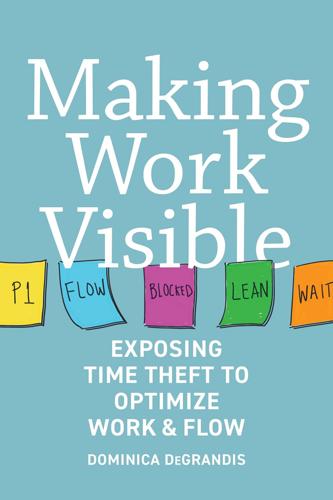
Making Work Visible: Exposing Time Theft to Optimize Workflow
by
Dominica Degrandis
and
Tonianne Demaria
Published 14 May 2017
Some people have difficulty killing projects that have started because of a desire to avoid losing whatever time and money have already been sunk into the project. The more people invest in a project, the harder it becomes to abandon it, even when a more rational decision based off of future value would be better. This is known as sunk cost fallacy. In The Principles of Product Development Flow, Donald Reinertsen suggests we should only consider the incremental investment needed to finish the project in comparison to its economic return.3 Purging low-value jobs from the work queue makes sense whenever a surplus of high-value jobs is in progress.
…
SMOKE TEST: A test to ensure that code functions as expected after a build is completed. SOURCE CONTROL: A place where developers check in their code for safe keeping. STAND-UP: A brief (usually 15 minutes) meeting where a team discusses issues. Because it’s only 15 minutes, people stand up for it. SUNK COST FALLACY: When you keep doing something because you’ve put a lot of effort into it and you don’t want to waste that effort. SYSTEM: A network of interdependent components that work together to try to accomplish a goal; includes the people doing the work and the impacting rules and tools. SYSTEMS THINKING: A holistic view of the system where the goal is to optimize the whole system versus just individual functions or silos.
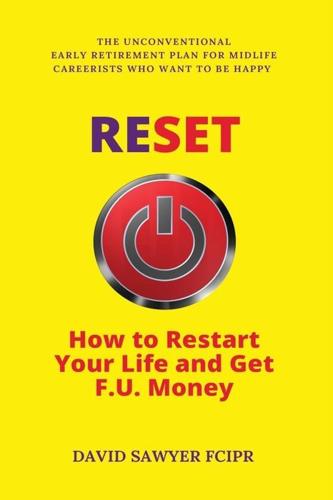
Reset: How to Restart Your Life and Get F.U. Money: The Unconventional Early Retirement Plan for Midlife Careerists Who Want to Be Happy
by
David Sawyer
Published 17 Aug 2018
[201] “what you should and shouldn’t do”: “The Life-Changing Magic of Tidying: A simple, effective way to banish...” toreset.me/201, p. 4. [202] Writing in the Washington Post: “I was getting buried in clutter. Here’s how I finally got free. – The...” 17 Jan. 2018, toreset.me/202. [203] article in The Atlantic: “An Economist’s Guide to Tidying Your Apartment – The Atlantic.” 13 May. 2015, toreset.me/203. [204] sunk cost fallacy: “Sunk cost fallacy – Behavioraleconomics.com | The BE Hub.” toreset.me/204. [205] status quo bias: “Status quo bias – Behavioraleconomics.com | The BE Hub.” toreset.me/205. [206] changed their life: “Customer Review – Amazon.com.” toreset.me/206. [207] (discard lots and organise what’s left): “The Life-Changing Magic of Tidying: A simple, effective way to banish...” toreset.me/207.
…
In an article in The Atlantic[203], former staff writer and ex-Freakonomics editor Bourree Lam (liberally citing Financial Times journalist Tim Harford) argues that the reason Marie Kondo’s book is such a worldwide phenomenon is because it highlights human beings’ mental fallacies, draws on powerful economic ideas and makes us look at our belongings anew. Take my climbing gear (don’t try, I wouldn’t let you). That’s an example of the sunk cost fallacy[204]. I paid at least £2,000 for my rack 15 years ago and I’m not giving it away for peanuts, even if I never use it again. No way is that going, Marie Kondo or no Marie Kondo. Then there’s status quo bias[205], which, when applied to your cluttered house (not the rock band, to which I am in no way biased) means that most of your belongings stay because you can’t think of a good reason to get rid of them.
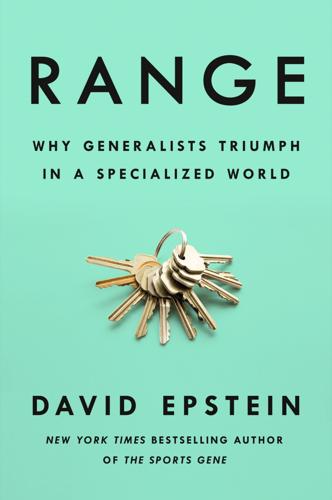
Range: Why Generalists Triumph in a Specialized World
by
David Epstein
Published 1 Mar 2019
A recent international Gallup survey of more than two hundred thousand workers in 150 countries reported that 85 percent were either “not engaged” with their work or “actively disengaged.” In that condition, according to Seth Godin, quitting takes a lot more guts than continuing to be carried along like debris on an ocean wave. The trouble, Godin noted, is that humans are bedeviled by the “sunk cost fallacy.” Having invested time or money in something, we are loath to leave it, because that would mean we had wasted our time or money, even though it is already gone. Writer, psychology PhD, and professional poker player Maria Konnikova explained in her book The Confidence Game how the sunk cost mindset is so deeply entrenched that conmen know to begin by asking their marks for several small favors or investments before progressing to large asks.
…
“People said, ‘This is going to take too long because you have no fundamental knowledge in this area and you’re going to be behind people who have already done their master’s there,’” she told me. To clarify: the advice she received was to stick in an area she knew she didn’t like because she had already started, even though she wasn’t even that far in. It is the sunk cost fallacy embodied. When she entered the professional world with 3M, she dared to switch focus again, this time away from her PhD research, and for a personal reason: her husband was coming to 3M from the same Clarkson lab, and she didn’t want to occupy the spot he might apply for. So she branched out.
…
K., 128 rules in households, 77 Sabin, Paul, 218 sampling period, 7, 65, 67, 130 savants, 27, 32 Schultz, Theodore, 129 Schwartz, Barry, 30–31 “Science, the Endless Frontier” (Bush), 285 science and scientists atypical knowledge combinations in, 281–82 and commercial applications, 284–86 critical thinking skills of, 51–53, 277–78 hyperspecialization in, 278–79, 278n and interdisciplinary approaches, 276–77, 278n, 279, 281 with outside avocations, 32–33 parallel trenches of, 12–13, 278–79 rush to specialize, 276 science curiosity, 227–28 and scientific literature, 276, 281–82 scientific reasoning, 51–53 value of range/inefficiency in, 283–86 working abroad, 281 Serial Innovators (Griffin, Price, and Vojak), 213 Seth, Jayshree, 206–7 Shafer, Mary, 255 Shakespeare, William, 288 Shannon, Claude, 33–34 Shoda, Yuichi, 158–59 short term planning, 154 Simmons, Michael, 289 Simon, Herbert A., 25 Simon, Julian, 216–18 Simonton, Dean Keith, 33, 212, 221, 281n, 288 Sloboda, John, 65–67 Smith, Gregory White, 127, 167 Smith, Johnny, 70–71 Smithies, Oliver, 269–272, 281 soccer, 7–8 Socrates, 85 Southern, Edwin, 271–72 Soviet Union predictions/forecasts regarding, 220–21 premodern villagers of, 40–44, 46–47 spelling bee competitors, 133, 134, 135 The Sports Gene (Epstein), 9 standardization covenant, 155 StarCraft video games, 28–29 stents (coronary), 266 Storm King Mountain fire, 246 strategic thinking, 22–23, 28–29 struggling, benefits of, 88, 89 sunk cost fallacy, 143 Super Bowl, 2018, 8 superforecasters, 258 Superforecasting (Tetlock and Gardner), 220 surgeons and surgical teams, 6, 32, 210–11 Suzuki Method, 76 Swanson, Don, 179–180, 189, 206 Swanson, Judy, 180–81 Syed, Matthew, 6 Talent Is Overrated (Colvin), 18 Taylor, Alva, 208–10 teachers, 91–92, 132 teams innovation in, 209–10 of specialists in “kind” learning environments, 210–11 tech companies, founders of, 11 technological inventors, 9 tennis, 31 ten-thousand-hours rule of expertise, 5, 32 test-and-learn model for exploring options, 163–64 testing/self-testing, 87–88, 89, 96 Tetlock, Philip, 218–223, 225, 228, 230, 231, 256 Thrale, Hester, 56 Tiger parents, 64–65, 275 Tillman Foundation, 10, 13 Togelius, Julian, 28–29 tools and Air Force pararescue jumpers, 250–55, 258 and cultural congruence/incongruence, 255, 256–57 in medical world, 266–67 and NASA’s quantitative culture, 241–45, 247–48, 249, 254, 257, 258 and overlearned behavior, 248, 250 and reliance on trusted methods/beliefs, 246–47, 265–67 in wilderness firefighting, 245–47, 248 Toynbee, Arnold, 51, 267 Treffert, Darold, 27 Tucker, Ross, 9 Tu Youyou, 272 Tversky, Amos, 108 University of Chicago, 49 University of Washington, 50 Unusual (or Alternative) Uses Task, 198 U.S.

Think Like a Rocket Scientist: Simple Strategies You Can Use to Make Giant Leaps in Work and Life
by
Ozan Varol
Published 13 Apr 2020
What’s more, the more time you spend building the pedestal, the harder it becomes to walk away from moonshots that shouldn’t be pursued. This is called the sunk-cost fallacy. Humans are irrationally attached to their investments. The more we invest time, effort, or money, the harder it becomes to change course. We continue to read a terrible book because we already spent an hour reading the first few chapters or pursue a dysfunctional relationship because it has dragged on for eight months. To counter the sunk-cost fallacy, put the monkey first—tackle the hardest part of the moonshot up front. Beginning with the monkey ensures that your moonshot has a good chance of becoming viable before you’ve poured massive amounts of resources into a project.
…
The monkey-first attitude requires developing a set of “kill metrics,” as X calls them, a set of go/no-go criteria for determining when to press ahead and when to quit.88 The criteria must be defined at the outset—when you’re relatively clearheaded—before your emotional and financial investments might trigger the sunk-cost fallacy and cloud your judgment. This approach shut down a project called Foghorn at X.89 The venture seemed promising at first. A member of X had read a scientific paper about taking carbon dioxide out of seawater and turning the carbon dioxide into affordable, liquid fuel with the potential to replace gasoline.
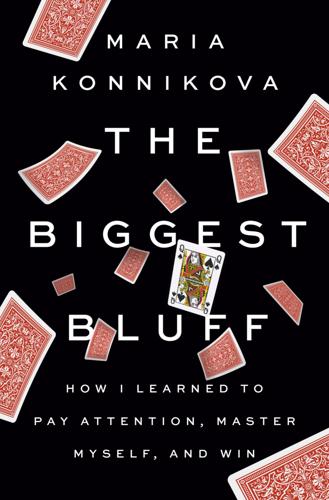
The Biggest Bluff: How I Learned to Pay Attention, Master Myself, and Win
by
Maria Konnikova
Published 22 Jun 2020
That idea suffers a debilitating blow after a loss with a pair of jacks—a hand that’s actually halfway decent. After a flop that has an ace and a queen on it—both cards that could potentially make any of my multiple opponents a pair higher than mine—I refuse to back down. I’ve had bad cards for the last half an hour. I deserve to win here! I lose over half my chips by refusing to fold—hello, sunk cost fallacy! We’ll be seeing you again, many times. And then, instead of reevaluating, I start to chase the loss: Doesn’t this mean I’m due for a break? I can’t possibly keep losing. It simply isn’t fair. Gambler’s fallacy—the faulty idea that probability has a memory. If you are on a bad streak, you are “due” for a win.
…
No one is telling me to quit poker, merely to reassess where I am. But somehow, I convince myself that swerving wouldn’t be a demonstration of my adaptability and flexible thinking. Instead, it would be a hit to my reputation, a demonstration of failure, of a lack of ability. It’s the classic sunk cost fallacy in action: you keep to your course because of the resources you’ve already invested. I’ve written about it many times. Only it seems that when it comes down to it, I don’t quite apply it to myself, right now. In my mind, sunk costs are supposed to be physical. Somehow it doesn’t occur to me that they can also be intangible.
…
See probability and statistics steamboat casinos, 44 Steinmetz, Andrew, 253, 255 Stepuchin, Frank, 304 stereotypes, 196–205, 221 stock trading, 13–14, 36, 61, 70 Stone, Angus and Julia, 8 storytelling approach to poker, 155, 157–61, 162–63, 168, 238 straights and straight draws and attentiveness at the table, 144–47 and author’s PCA title event, 274–75, 282, 286 and famous Seidel showdown, 84 gutshot straight draws, 286 and online play, 72–73 open-ended straight draws, 72 strategy training adjusting strategies, 223–26 and donkey space, 223–26 and game theory optimal (GTO) strategies, 145 and online play, 67–70, 71–81, 88–93 and picking your spots, 91–92, 111, 276, 278, 284 and Seidel’s style of play, 82–88 streaks, 58, 86, 106–9 stress and stress management, 4, 30, 75, 119–20, 263, 291 suck-outs, 106, 197, 282–83 suited hole cards, 54, 80–81, 99–100 sunk cost fallacy, 107, 240–41 Sun Tzu, 67, 76 Super Bowl, 141 superstition, 297–307, 309. See also luck sushi, 121, 235, 314 Suslova, Polina, 34 swapping, 123, 151 sweating, 112, 140–41 tai chi, 149 “Tails, I Win. Heads, It’s Chance” (Langer), 63 Taleb, Nassim, 320 talent.

Competition Overdose: How Free Market Mythology Transformed Us From Citizen Kings to Market Servants
by
Maurice E. Stucke
and
Ariel Ezrachi
Published 14 May 2020
With drip pricing, a former chief economist of the UK competition authority noted, “Consumers feel they’ve already made the decision to purchase [which] creates loss aversion—consumers have committed time and effort to the search before being hit with extra charges.”33 A third weakness is something we often perceive as a strength, namely commitment and consistency. Here, after having invested a lot of time and effort into this purchase, we want to see the purchase through to its end.34 Economists call this the sunk cost fallacy. Finally, drip pricing taps into brain fatigue. Each Las Vegas hotel on the Strip offers many different types of rooms, with varying square footage, number of beds and bathrooms, and views. Each type of room has a different room rate, with different promotions for rewards club members. If you want to bring your parrot, check in early, or check out late, additional fees apply.
…
See also CoreCivic Costco and other club stores, 102–3 cream skimming, 169–70, 175, 183–87 credit card industry, 68, 69, 70–71, 75–77 credit default swaps, 128 criminal sentencing, 80–81, 176–77 crony capitalism, 160, 163, 230, 285 Cruz, Ted, 266 cultural conditioning college as route to social mobility, 29–30 competition delivers quality at a low price, 47–48, 49 competition is always good, x, 284 embarrassment for gullibility, 70 and escalation paradigm, 35–36 lifelong superior achievement goal, 32–33 to love competition, 125 to not compete, 122 self-interest, 71, 235–36 and status competition, 28 See also human nature culture, x–xi Dalai Lama, 253 Dale, Stacy, 36–37 D’Angelo, Jonathan, 112–13 Dartmouth College, 25 Darwin, Charles, 39 data for Amazon’s personal recommendations, 105–6, 107 analytical power of, 218–19 children’s data gleaned for advertisers, 193–95 college scorecard data, 300–304, 318n86 on consumers’ behavior, 87–91, 204–5, 207–9 Gamemakers attract bidders/advertisers, 207–9 Gamemakers’ harvesting techniques, 194, 203–7 in Las Vegas, 87–91 dating services, online overview, 108–9 competition levels, 109–12, 111 InterActiveCorp, 109–11, 111, 115–16 and marriage, 114–15 profiting from choice overload, 113–14, 115–16 slow dating, 117 deadbeat customers, 70–71 Dear Genevieve effect, 12–15, 16, 19–20, 38–39 death bonds, 245 decision aids for choice overload, 101–2 de-escalating the arms race colleges and universities, 25–27, 40, 133–34 collegiate sports, 134–38, 140–41 students and parents, 27–34, 40 Deloitte, 277 deregulation of banks, 126–30 derivatives market, 261–63 diaper apps, 197 digital ad market, 210 diminishing returns, 96–97 dissent, noncompliance, and change, 284–87 divergence of individual and collective interests, 12–20, 39–40, 242–43, 263 DOJ (US Department of Justice), 128, 172–73, 174, 232 do not track features on mobile phones, 212–13 Dostoyevsky, Fyodor, 71 drip pricing overview, 147 and anchor value, 80–81 and brain fatigue, 81–82 Caesars opposition to, 84–87 casino lobbyists combat FTC’s plan, 150–52 vs. consumer’s ability to compare prices, 155–57 consumers’ loss aversion, 81 countries with laws against, 148 FTC attempt to legalize, 148–50 in hotels, 78–80, 82–84, 147, 148–54 lobbyists use competition ideology, 150–52 and sunk cost fallacy, 81 Duhigg, Charles, 227 Duke University, 16–17, 24 dynamic ads, 204–5 Easterbrook, Frank H., 234–35 Economist, 197 Eliot, T. S., 20 Elliott, Chris, 46–47 Ellis, George, xi–xii, 256–58, 257 Enron, 246–47 ethical values. See social, moral, and ethical values Ethiopia, 242–43 Europe, 51, 252, 287.
…
See social, moral, and ethical values Southeastern Conference (SEC) 137 number of varsity sports compared to NESCAC, 138 participation of student athletes compared to NESCAC and Ivy League, 138 Spielberg, Steven, 36–37 sporting event with injured player metaphor, 270 Stanford University, 15, 25 status competition, 28 Steven Spielberg effect, 36–37 Stigler, George, 236 Stiglitz, Joseph, 231 stock market, 260 Stucke, Liz, 14 Stucke, Maurice E., x subprime mortgages, 128, 129, 130 sunk cost fallacy, 81 surveillance capitalism, 195 Survivor (reality show), 192–93 Sweden, 52 switching costs, reducing, 110 Tawney, R. H., 252–53 Thaler, Richard, 237 Thatcher, Margaret, 187 Theory of Moral Sentiments, The (Smith), 236–37 Theory of the Leisure Class (Veblen), 248 time-limited offers, 82 Tinder.com, 108 Tiny Lab Productions, Lithuania, 194–95, 199, 202–3, 223 Toma, Catalina, 112–13 toxic competition overview, 40, 122, 227–28, 254, 255 and antitrust laws, 103 collegiate sports programs, 139–40 deregulation of the financial industry, 129–30 economic waste caused by, 23–25 escalation of problems, 9–10 factors that lead us to, 281–84 four conditions leading to, 49–65 Gamemakers, 192–93, 203, 206–7, 220–22, 223 incremental steps disguise the movement toward darkness, 282–83 lack of awareness and/or control, 6 misallocation of resources, 24 NHL pre-helmet law scenario, 4–5 of online dating services, 116 paying less and getting much less, ix–x, xii–xiii quality and integrity as cost of, 178–79 regaining your power to change it, 284–87 in school ranking systems, 7–9 sellers’ inability to limit customer choices, 102, 103 See also choice overload; competition machine; exploiting human weakness; race to the bottom tracking software of Gamemakers, 204–7, 217, 222 traditional barriers, 110 transaction costs, 110 transparency in online dating, 109–10 Travelers Group Inc., 128 Travel Troubleshooter blog, 79 Trimega Laboratories, United Kingdom, 181 Trinity School, New York, 32–33 Trump, Donald, 174, 263 Trump administration deregulating as much as possible, 159 First Step Act, 169 and FTC, 157 increasing private prisons, 175 and online gambling, 153 rolling back consumer financial protections, 268–69, 285–86 Trump International Hotel Las Vegas, 147, 149 Trump International Sonesta Beach Resort, 149–50, 176 Truth in Hotel Advertising Act (2016), 153–54 Tulane University, 12–14, 21, 22–23, 38 Tyrie, Andrew, 291 UAB (University of Alabama at Birmingham), 138–39, 140–41 UK Forensic Science Service (FSS), 177–80 UK National Health Service (NHS), 183–87 Ultimatum Game, 237–39, 240 unethical behavior as cost of zero-sum competition, 246–47 unions as anticompetitive, 232 United Kingdom competition machine explosion, 41–45, 44 fuel shortage incidents on airlines, 57 horsemeat scandal, xii, 41–42, 45–47 investigating drip pricing on hotel booking sites, 148 National Health Service and cream-skimming, 183 privatizing the UK Forensic Science Service, 177–83 privatizing water, 52–53, 58–59, 68, 162, 187 school ranking system effects, 7–8 self-regulation in food industry, 273–74 United Nations, 229–30, 271 United States bankruptcies and their causes, 270 deterioration of the American Dream, 231–32 job satisfaction levels, 227 kudzu-ing drip pricing, 148–53 oregano fraud, 52 school ranking system effects, 8–9 wealth inequality, 229–30 Universal Declaration of Human Rights, 271 universities race to woo and reject applicants, xii.

Capitalism Without Capital: The Rise of the Intangible Economy
by
Jonathan Haskel
and
Stian Westlake
Published 7 Nov 2017
For example, as McKinsey4 points out, promoters of the Vancouver Expo 86 kept refusing to cancel the project even as the costs ballooned by twenty times, from the original Can$78 million in 1978. This “sunk-cost fallacy” can be particularly fatal to good decision making when linked with other cognitive biases, such as confirmation bias, in this case massively overinflated forecasts of visitor numbers. We might expect managers of businesses who have sunk lots of money into intangible investments like R&D or setting up new business units to overestimate their value and to be more reluctant to let them go. Indeed, a world in which this behavior was common would see an unsettling psychological shift. Because of the sunk-cost fallacy, we might expect to see more businesses sticking with bad investments that they were better off drawing a line under.
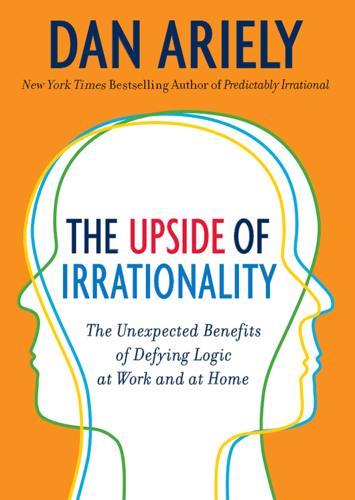
The Upside of Irrationality: The Unexpected Benefits of Defying Logic at Work and at Home
by
Dan Ariely
Published 31 May 2010
They never completely cease to influence me (this is something to keep in mind as you attempt to become a better decision maker). Third, after investing years of time and effort into making my hand function as best it can, living with the daily pain, and figuring out how to work with these limitations, I’m a victim of what we call the sunk cost fallacy. Looking back at all my efforts, I’m very reluctant to write them off and change my decision. A fourth reason is that, twenty-some years after the injury, I have been able to rationalize my choice somewhat. As I’ve noted, people are fantastic rationalizing machines, and in my case I have been able to tell myself many stories about why my decision was the right one.
…
ultimatum game and, 275–76 weak and strong, 136–37 wise men’s warnings against, 151 see also customer revenge risk taking, 188 Roll-up game, 24, 34 romantic relationships: canoeing and, 278–79 emotional cascades and, 277–78 resilience to breakup of, 172–73 see also assortative mating; dating Roosevelt, Franklin Delano, 295 Rwanda, genocide in, 238, 253, 255 S SAP accounting software, 54, 77 SAT scores, scores on practice tests vs., 42 Schelling, Thomas, 246 Schkade, David, 175–76 Schmalensee, Dick, 259–60 Schweitzer, Albert, 151 scientific research, preference for one’s own ideas in, 117 Scitovsky, Tibor, 188 SeekaTreat, 59–60 self-herding, 262–64, 276 negative emotions as input for, 263–64 specific and general versions of, 271–74 ultimatum game and, 270–74 self-made goods, attachment to, see IKEA effect senses, adaptive ability of, 158–60 “Sensuous Chocolate Truffles,” Sandra Lee’s recipe for, 87–88 serendipity, enjoyment heightened by, 188 “70/30 Semi-Homemade® Philosophy,” 87–88 Shapiro, Laura, 86 Shaw, Scott, 238 shoes, designing your own, 95, 96 Shore, Zachary, 117 short-term enjoyments, long-term objectives vs., 4–5 Shrek, 154 Simon game, 23, 24, 34 Sinclair, Upton, 38 Singer, Peter, 242n Sisyphus, myth of, 69 Skinner box, 60–62 Slovic, Paul, 239–41, 246–48 Small, Deborah, 239–41, 246–48 Smith, Adam, 77–78, 79 sneakers, designing your own, 95 social contract, 128 social hierarchy, see assortative mating social loans, 234 social pressure, 42–46 anticipatory anxiety and, 45 cockroach experiment and, 45–46 public speaking and, 42–43 “Some National Stupidities” (Twain), 107–8 Something from the Oven (Shapiro), 86 Sony, 120–21 sour grapes theory, 198–99, 200, 201, 203 speed dating: in experiment on assortative mating and adaptation, 205–10 for older adults, 229 standard process of, 206–7 virtual dating and, 226–27 Spiller, Stephen, 109–10, 303–4 Spock-like state of mind, 231, 246, 247, 248 Stalin, Joseph, 238–39 Stanford University, 37 state of flow, 49 statistical victims, apathy toward plight of, 238–41, 242, 246, 247–49, 252–53 status quo bias, 285, 286 Stills, Stephen, 197, 211–12 stress, 38, 43, 50 bonus situations and, 31, 32–33, 36, 47, 51 “clutch” abilities and, 39–41 loss aversion and, 32–33 striatum, 126 Stringer, Sir Howard, 120 sunk cost fallacy, 287 Surowiecki, James, 120 “survivor” rhetoric, 241–42 Szent-Györgi, Albert, 248–49 T Talmud, 255 Taylor, Frederick Winslow, 78–79 technological development: division and meaning of labor and, 79–80 mismatch between evolution and speed of, 8–9 Teresa, Mother, 239 Tesla, Nikola, 117 texting, 7–8 while driving, 6, 7, 8 tickling oneself, 188 Tierney, John, 110 time, passage of: hedonic adaptation and, 171–74 transience of emotions and, 257, 261, 270 vengeful feelings and, 151, 153 TiVo, 181n Tomasello, Michael, 127 tooth drilling, adaptation to pain and, 161–62 transient experiences, happiness derived from, 187–88 trust, 127–29, 153 rebuilding of, neglected in wake of financial meltdown of 2008, 131 trust game, 125–26, 127 bailout plan from perspective of, 130 tuberculosis, 250, 251 TV commercials, 181n Tversky, Amos, 32n Twain, Mark, 107–8, 116, 151 U ultimatum game, 265–77 after dissipation of original emotions, 270–71 gender differences and, 275–76 incidental emotions introduced into, 268–70 with participants in role of senders, 271–74 rational economics and, 266, 267 United Nations (UN), 255 University of Massachusetts Medical School, 152 unpredictability, enjoyment heightened by, 188 V vacuum cleaner sounds, adaptation to, 177–79 vagueness, empathy and, 244 Vanderbilt, Cornelius, 154 Viégas, Fernanda, 225 virtual dating, 225–30, 231 explanations for success of, 227–30 speed-dating event and, 226–27 visual system, adaptive ability of, 159 vividness, empathy and, 243n, 244, 245, 254 W Wachtel, Claire, 65 Wall Street implosion of 2008, see financial meltdown of 2008 Waxman, Henry, 128–29 Wealth of Nations, The (Smith), 77–78 Weckler, Walter, 151 Weiner, Ina, 168–69 Weisberg, Ron, 101 work, see labor world problems experiment, 109–16 World War II, 167 writing: blogging and, 65 deriving meaning from, 64–65 Y yentas (matchmakers), 213 Yerkes, Robert, 18–20, 22, 31, 47 Young, Jim, 201, 203 “Yours Is a Very Bad Hotel,” 140–41, 146 Z Zajonc, Robert, 45–46 About the Author Dan Ariely is the James B.
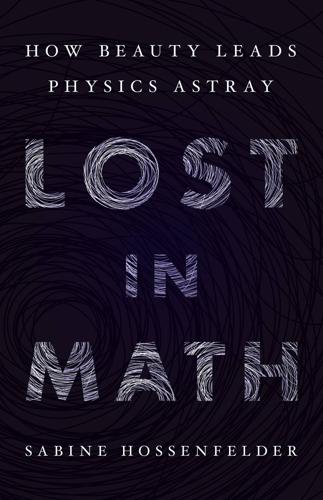
Lost in Math: How Beauty Leads Physics Astray
by
Sabine Hossenfelder
Published 11 Jun 2018
But there are other cognitive and social biases affecting science that are not as well-known.14 Motivated cognition is one of them.15 It makes us believe positive outcomes are more likely than they really are. Do you recall hearing that the LHC is likely to see evidence for physics beyond the standard model? That these experiments likely will find evidence for dark matter in the next couple of years? Oh, they are still saying that? Then there is the sunk cost fallacy, more commonly known as throwing good money after bad. The more time and effort you’ve spent on supersymmetry, the less likely you are to call it quits, even though the odds look worse and worse. We keep on doing what we’ve been doing long after it’s stopped being promising, because we already invested in it, and we don’t like to admit we might have been wrong.
…
perturbation theory and, 193 problems with, 70–72 qubits and, 191 spectral geometry and, 158 string theory and, 36, 188–189 symmetry groups for, 142–144 technical naturalness of, 78–79 ugliness of, 152 steady state universe, 29 Steinhardt, Paul, 101 Strassler, Matt, 70 string theory, 172 beauty of, 181–182 black holes and, 175, 182, 184–185 controversy surrounding, 188–190 cosmological constant and, 173 development of, 172 economics compared with, 225 eternal inflation and, 104 failure of, 166 gauge-gravity duality and, 175–176, 182, 184–185, 228–229 general relativity and, 188–189 gravity and, 147–148, 172, 174 LHC and, 173–174 non-empirical theory assessment and, 33–34 nuclear physics and, 173–174 standard model and, 36, 188–189 strong nuclear interaction and, 172, 174 supersymmetry and, 36, 172–175 String Theory and the Scientific Method (Dawid), 33 string theory landscape, 104–105, 173 strong CP problem, 71–72, 203–204 strong nuclear interaction, 26, 53, 140 axions and, 203–204 CP symmetry and, 71 in gauge theory, 83–84, 83 (fig.) perturbation theory and, 193 string theory and, 172, 174 symmetry group for, 142 SU(2), 142, 239 SU(3), 142, 239 SU(5), 142–144, 152–153 sunk cost fallacy, 230 super-LHC, 82 superpartners Higgs boson and, 63–64 lack of detection of, 12 Lisi bet on, 165–166 naturalness and, 38–39 string theory and, 36 supersymmetric grand unification, 72 supersymmetry, 10, 235 attractiveness of, 11, 74–75 beauty of, 145, 180 convictions behind, 12–13 cosmological constant and, 181 dark matter and, 12, 60, 145 discoveries necessary for, 11–12 elegance of, 145 elementary particles and, 11 fine-tuning and, 65–66, 80, 150 gauge couplings in, 82 grand unification and, 143–145 Higgs mass and, 38, 63–64 lack of evidence for, 62, 149–150 LHC and, 80–81 mathematical proof and, 13 naturalness and, 14–15, 36–38, 145, 150 new colliders for, 82 particle detection for, 13 should be part of nature, 63 social feedback and, 157 sociology and, 75 split susy, 80 string theory and, 36, 172–175 vagueness of predictions of, 109 WIMPs and, 200–201 Susskind, Leonard, 101, 157, 229 susy.
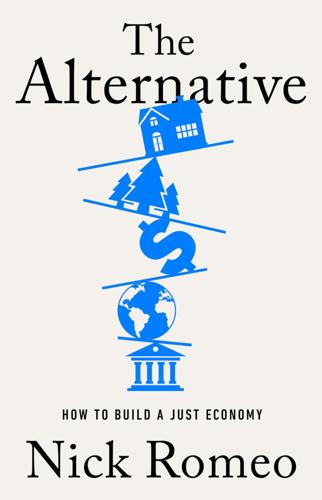
The Alternative: How to Build a Just Economy
by
Nick Romeo
Published 15 Jan 2024
Even very late in the story, Pahóm still has the option to forfeit the trivial sum of a thousand rubles, rest in the grass, and walk leisurely back to the tribe. Yet by this point, he is in the grips of a deadly sunk cost fallacy. He has already invested so much effort; it would be foolish to stop now! So he continues pouring more energy into a doomed endeavor. Moments before his death, he realizes this. “I have grasped too much and ruined the whole affair,” he thinks. Like the heroes of ancient Greek tragedy, he recognizes a vital truth only when it is too late. Long before behavioral economics existed, Tolstoy grasped the structure of some of its central concepts, such as the sunk cost fallacy and the hedonic treadmill. Yet he understands these phenomena more as frailties than fallacies, not bugs in our cognitive software so much as risks within a landscape of moral possibilities.
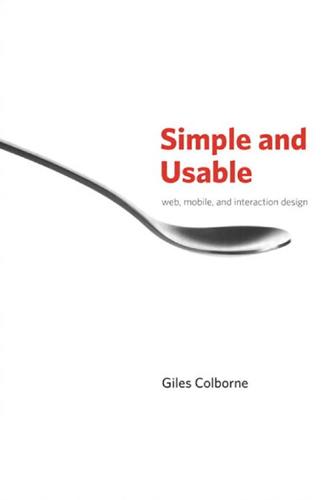
Simple and Usable Web, Mobile, and Interaction Design
by
Giles Colborne
Published 14 Sep 2010
One objection to removing half-baked features or content is that the time and effort that has gone into creating them will be wasted. No matter how poor the item, if it’s been paid for, no one wants to get rid of what they have. In the words of Jack Moffett, “Broken gets fixed. Shoddy lasts forever.” Economists call this the “sunk costs fallacy.” In reality, the cost of creating the feature can’t be recovered, so the only way to judge the feature is on how much good it is doing and how much more it will cost to keep. Features and content always place a mental load on users (“Do I look at this or not?”) and always cost something to maintain (someone will have to keep the content up to date or make sure the feature still works).
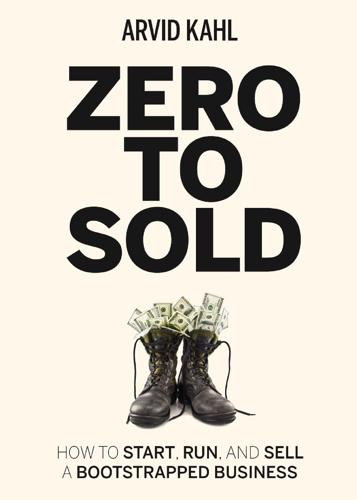
Zero to Sold: How to Start, Run, and Sell a Bootstrapped Business
by
Arvid Kahl
Published 24 Jun 2020
Even when a feature is clearly damaging in terms of economic impact, we don't remove it immediately. Why is that? What makes us so hesitant to remove what we can see isn't working? It's the thing that makes an entrepreneur great: boundless optimism. Here, it's just applied the wrong way and mixed with an unhealthy dose of the sunk-cost fallacy. That fallacy states that we perceive something as more valuable than it is when we have spent considerable resources in creating or attaining it. We would rather "see it through until the end" than counting our losses and getting rid of it. If you have a feature that no customer uses, remove it.
…
You thought you could use this eventually, and you'd better already have it in the product before you need it. Maybe you intend to eventually partner with a service, so you build an integration ahead of time. And then the partnership falls through, and you never need it. Many technical founders then fall prone to the sunk cost fallacy, thinking that since they already invested their time, the functionality needs to stay there. You're trying to capitalize on trends. Ever implemented social-media-like functionality even if your customers never interact? I built a Facebook-like social stream with messages and comments for farmers who never took the time to use it because they were too busy harvesting their vegetables.
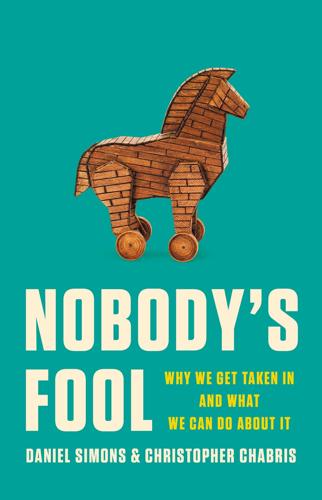
Nobody's Fool: Why We Get Taken in and What We Can Do About It
by
Daniel Simons
and
Christopher Chabris
Published 10 Jul 2023
Augenblick offered a mechanism to explain why people participate in these seemingly irrational auctions. Imagine you spent $100 on a concert ticket, but when the day arrives, you’re feeling lousy and would prefer not to go. If you go to the concert even though you’d rather not, you’ve succumbed to the sunk-cost fallacy. The cost of the ticket is “sunk” because you won’t get the money back whether you attend the concert or not. In poker, whatever money you have put into the pot no longer belongs to you—it belongs to the winner of the hand, so it too is a sunk cost. But if you believe that money is still in some sense yours, you may take excessive risks, betting too much with too little chance of winning, in the hopes of retrieving it.
…
Examples of advertisements: DealDash [https://www.youtube.com/watch?v=DaKsZC0whYc] and Quibids [https://www.youtube.com/watch?v=TCowafeg_-U]. DealDash’s fine print also includes hard-to-parse statistics like “54% of auction winners save 90% off Buy It Now prices or more.” 10. N. Augenblick, “The Sunk-Cost Fallacy in Penny Auctions,” Review of Economic Studies 83 (2016): 58–86 [doi.org/10.1093/restud/rdv037]. 11. K. Mrkva, N. A. Posner, C. Reeck, and E. J. Johnson, “Do Nudges Reduce Disparities? Choice Architecture Compensates for Low Consumer Knowledge,” Journal of Marketing 85 (2021): 67–84 [https://doi.org/10.1177/0022242921993186]. 12.
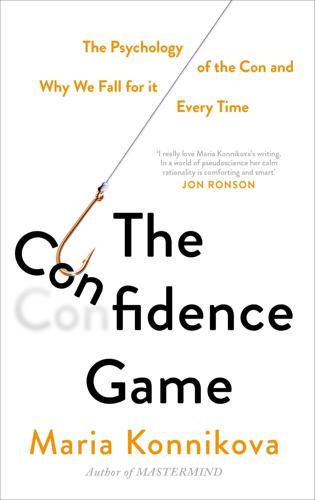
The Confidence Game: The Psychology of the Con and Why We Fall for It Every Time
by
Maria Konnikova
Published 28 Jan 2016
But the weight of the cost loomed too heavy after ground was first broken. As one senator put it in discussions of another project, the Tennessee-Tombigbee Waterway, “To terminate a project in which $1.1 billion has been invested represents an unconscionable mishandling of taxpayers’ dollars.” Thaler termed the phenomenon the sunk-cost fallacy. The sunk-cost effect gives us a continued, strong motivation to believe in something even when the landscape has changed significantly since we first invested ourselves in it. In theory, we should only care about new, incremental costs. What we’ve already put into something shouldn’t matter: it’s lost anyway, whatever “it” happens to be—time, money, energy, whatever else.
…
To someone invested in a specific task or engrossed in the drama of the confidence game, it is essentially invisible. In 1985, Hal Arkes and Catherine Blumer published a series of ten studies to illustrate sunk costs in action and thus shed light on what was driving the irrational-seeming behavior. What if they spelled it all out and made the red flags and errors clear? What did the sunk-cost fallacy mean in a practical scenario? It would be the equivalent of pointing the Bureau of Reclamation’s leader at every bit of evidence and calling out the potential for trouble, or laying out a list of reasons, complete with documentation, for Ann Freedman as to why Glafira Rosales might not be what she said, and then looking to see if their behavior would change.
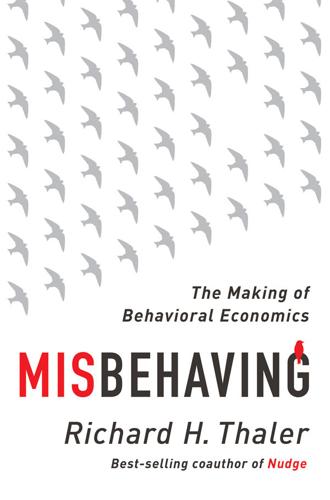
Misbehaving: The Making of Behavioral Economics
by
Richard H. Thaler
Published 10 May 2015
Maya Bar-Hillel started calling me the world’s only clinical economist. (After her quilt purchase she became my first client.) I may or may not have deserved that title, but I was hardly the only economist to recognize that Humans have trouble with this concept. In fact, the mistake is so common it has an official name—the sunk cost fallacy—and the fallacy is often mentioned in basic economics textbooks. But many people, even if they understand the concept in principle, can find it difficult to follow the advice to ignore sunk costs in practice. Driving to the game in the blizzard, or playing tennis in pain, are mistakes no Econ would make.
…
But Posner was not in Lott’s line of sight, so I saw him angrily asking people around him what had happened. I quickly moved on to another topic. The fact that the strongest resistance to behavioral economics came from those who had the greatest investment in building up the rational actor model raised an amusing possibility. Might their objections be more evidence in support of the sunk-cost fallacy? Of course, I could not say to my critics that by clinging to their beloved theories they were merely paying attention to sunk costs, but I could introduce the one bit of new experimental data we had included in the paper. The data came from a version of the Ultimatum Game. In the usual version of the Ultimatum Game, the experimenter provides the money that the participants divide.
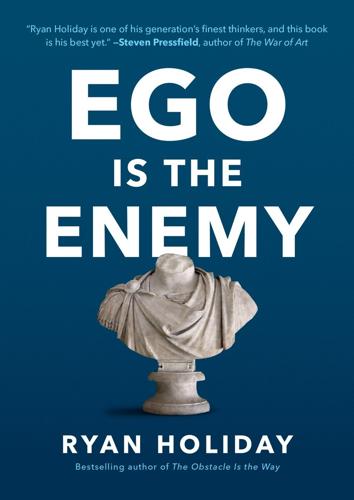
Ego Is the Enemy
by
Ryan Holiday
Published 13 Jun 2016
This is all perfectly fine; it’s what being an entrepreneur or a creative or even a business executive is about. We take risks. We mess up. The problem is that when we get our identity tied up in our work, we worry that any kind of failure will then say something bad about us as a person. It’s a fear of taking responsibility, of admitting that we might have messed up. It’s the sunk cost fallacy. And so we throw good money and good life after bad and end up making everything so much worse. Let’s say the walls feel like they’re closing in. It might feel as if you’ve been betrayed or your life’s work is being stolen. These are not rational, good emotions that will lead to rational, good actions.
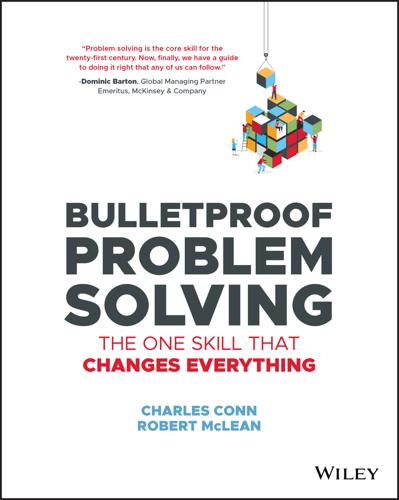
Bulletproof Problem Solving
by
Charles Conn
and
Robert McLean
Published 6 Mar 2019
It is the failure to seriously consider the antithesis to your thesis, ignoring dissenting views—essentially picking low hanging mental fruit. Anchoring bias is the mistaken mental attachment to an initial data range or data pattern that colors your subsequent understanding of the problem. Loss aversion, and its relatives, the sunk cost fallacy, book loss fear, and the endowment effect, are a failure to ignore costs already spent (sunk) or any asymmetric valuing of losses and gains. Availability bias is use of an existing mental map because it is readily at hand, rather than developing a new model for a new problem, or just being influenced by more recent facts or events.

The Better Angels of Our Nature: Why Violence Has Declined
by
Steven Pinker
Published 24 Sep 2012
In the case of a war of attrition, one can imagine a leader who has a changing willingness to suffer a cost over time, increasing as the conflict proceeds and his resolve toughens. His motto would be: “We fight on so that our boys shall not have died in vain.” This mindset, known as loss aversion, the sunk-cost fallacy, and throwing good money after bad, is patently irrational, but it is surprisingly pervasive in human decision-making.65 People stay in an abusive marriage because of the years they have already put into it, or sit through a bad movie because they have already paid for the ticket, or try to reverse a gambling loss by doubling their next bet, or pour money into a boondoggle because they’ve already poured so much money into it.
…
Mammals are extreme among animals in the amount of time, energy, and food they invest in their young, and humans are extreme among mammals. Pregnancy and birth are only the first chapter in a mother’s investment career, and a mammalian mother faces an expenditure of more calories in suckling the offspring to maturity than she expended in bearing it.108 Nature generally abhors the sunk-cost fallacy, and so we expect mothers to assess the offspring and the circumstances to decide whether to commit themselves to the additional investment or to conserve their energy for its born or unborn siblings.109 If a newborn is sickly, or if the situation is unpromising for its survival, they do not throw good money after bad but cut their losses and favor the healthiest in the litter or wait until times get better and they can try again.
…
death toll in Clark, Gregory clash of civilizations Clauset, Aaron Clausewitz, Karl von Clay, Henry Cleaver, Eldridge Cleveland, Robert Nasruk climate change Clinton, Bill Clockwork Orange, A (film) cluster illusion Cobden, Richard Cochran, Gregory Cockburn, J. S. code of the streets; see also honor cognitive dissonance cognitive illusions, xxiii; see also availability heuristic; cluster illusion; conjunction fallacy; loss aversion; overconfidence; positive illusions; sunk-cost fallacy Cohen, Dov Cohen, Jonathan Cold War end of interstate wars in Europe mutually assured destruction proxy wars superpower confrontations Cole, Michael Collier, Paul Collins, Randall Colombia Columbine High School commerce: Christian ideology vs. cooperation in and genocide growth of international trade and money protectionist tariffs and transportation see also gentle commerce common knowledge communality, see Community, ethic of communal violence, see intercommunal conflict communism collapse of and genocide ideology of Community, ethic of compartmentalization, moral compassion see also empathy; sympathy complex systems, science of Concert of Europe concrete operations, Piagetian stage Conflict Catalog conformity Congo, Democratic Republic of (DRC) Congo Free State conjunction fallacy conquest Conquest, Robert Conrad, Joseph conscience; see also moral sense conscientious objection consciousness conscription, see military conscription conservatism and intelligence and morality and treatment of animals see also liberalism, and conservatism Constantine, Emperor Constitution, U.S.: amendments: Second Eighth Thirteenth Nineteenth design of and gentle commerce Cool Hand Luke (film) Cooney, Mark cooperation in commerce evolution of and intelligence norms of in Prisoner’s Dilemma games and Tragedy of the Commons coordination games corporal punishment: of children and torture Correlates of War Project Cosmides, Leda cosmopolitanism and democracy and end of Cold War vs. genocidal ideologies introduction to concept and liberalism vs. macho dominance opposition to and Rights Revolutions costly signaling counter-Enlightenment Country Joe and the Fish Coupland, Reginald coups d’état Courtwright, David Cousins, Norman Cramb, J.

Aerotropolis
by
John D. Kasarda
and
Greg Lindsay
Published 2 Jan 2009
Twenty years and $15 billion later (or quite a few billion more, depending on delays, overruns, and inflation), O’Hare will be the world’s busiest airport again (or not, depending on Beijing), and yet the streams of arriving 787s will be forced to pirouette around a graveyard upon landing. In its sad attempt to be a good neighbor, the OMP unwittingly underscored the impossibility of ever truly “modernizing” O’Hare, not while the Union dead still hold a place of honor in the infield. One could make the case (and Peotone’s proponents had) that the program was the sunk cost fallacy run amok for all sorts of reasons: historical, political, and the utterly irrational. Daley and the airlines were throwing good money after bad, and the latter have threatened to stop writing checks. Fifteen billion dollars can buy you a lot of airport—building Richard the First’s island airfield in Lake Michigan would probably cost less today—but it cannot completely undo the mistakes the planners of O’Hare (or LAX or Dulles) had unknowingly made during construction.
…
The nearest interstate was nearly an hour’s drive away; the nearest city was ninety minutes! Its airport had nothing going for it except a lot of empty acreage and a stubby runway. As any number of economists could have told you, the state had made a classic mistake of economic stimulus, the sunk cost fallacy mentioned earlier: throwing good money after bad at the hardest-hit communities, rather than putting it to work in successful places where it could do the most good. Kasarda was surprised when they took him at his word that location didn’t matter. Maybe raw geography didn’t, he thought, but accessibility certainly did.
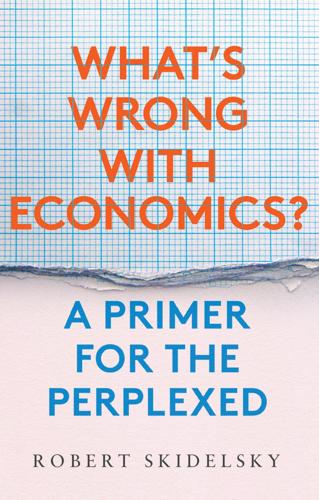
What's Wrong With Economics: A Primer for the Perplexed
by
Robert Skidelsky
Published 3 Mar 2020
The inverse to this is automation bias: thinking that automated instructions must be correct even when common sense tells you they are wrong. A bunch of Japanese tourists drove their car into the sea because their satnav told them they were on a road. Airplane crashes have happened because pilots trusted their faulty navigation systems rather than the evidence of their eyes. 6. Sunk cost fallacy This is a combination of anchoring and loss aversion. People will keep on ploughing money into a failed investment, because they can’t face the psychological pain of admitting that it had failed, or carry on waging a war that they should have abandoned long ago, because they cannot bring themselves to admit that it was in vain. 7.
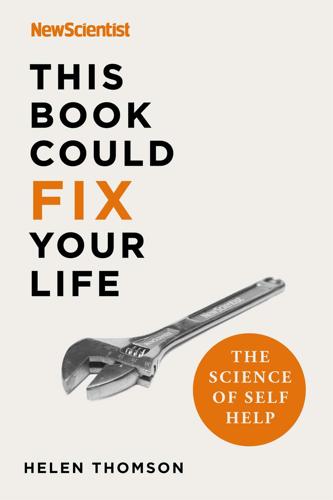
This Book Could Fix Your Life: The Science of Self Help
by
New Scientist
and
Helen Thomson
Published 7 Jan 2021
This self-distancing restores a less biased, more open-minded attitude. Next, repeatedly question your judgement over a situation. All that mindfulness practice you’ve put in after earlier chapters should come in helpful now, too – it seems to encourage a wiser, more rational stance, reducing errors such as the sunk-cost fallacy.2 Lastly, there is good evidence that with practice you can learn to identify your own biases and logical fallacies, so you can spot the potential for dysrationalia before you go wrong. One of the most robust tricks is to pause to consider the opposite of what you had just been thinking, actively challenging your assumptions and intuitions and looking for alternative hypotheses.
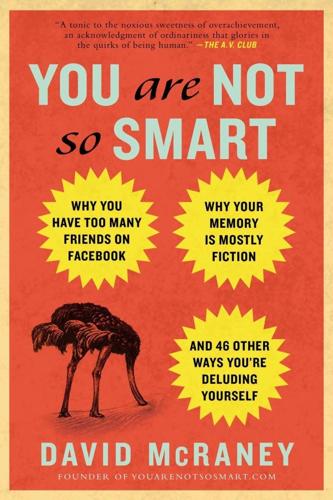
You Are Not So Smart
by
David McRaney
Published 20 Sep 2011
The group will agree to an amount around $5, and then someone in the group will be given the bottle for free. Then, after an hour, they ask the person how much they would be willing to sell the bottle back to the experimenter for. They usually ask for more money, like $8. Ownership adds special emotional value to things, even if those things were free. Another bias is the sunk cost fallacy. This is when you’ve spent money on something you don’t want to own or don’t want to do and can’t get it back. For instance, you might pay too much for some take-out food that really sucks, but you eat it anyway, or you sit through a movie even after you realize it’s terrible. Sunk cost can creep up on you too.

Daughter Detox: Recovering From an Unloving Mother and Reclaiming Your Life
by
Peg Streep
Published 14 May 2017
Moreover, when we contemplate change, we’re likely to frame the discussion in terms of what we already have invested instead of the possible gains we might reap from moving on. Focusing solely on our investment—which could be time, money, energy—gets in the way whether we’re thinking about leaving a marriage, another relationship, a job, or even selling a clunker car we’ve repaired again and again. The fancy name for this habit of mind is the “sunk-cost fallacy,” and we all do it. It’s called a fallacy because the investment made is long gone and can’t be recouped by either staying or leaving, but that doesn’t stop us from thinking this way. It prevents us from looking forward. The only answer, again, is conscious awareness of your automatic thought processes.

Early Retirement Extreme
by
Jacob Lund Fisker
Published 30 Sep 2010
However, perhaps you're tougher than I am--some bike commuters ride more than 15 miles each way, every day. Walking a six mile round trip daily is certainly doable. I did it daily for half a year once, but I wouldn't want to walk much farther than that; it simply takes too much time. Some may be presently bound by mortgages that are underwater (don't fall for the sunk cost fallacy) or by not having sufficient ready funds to make a deposit, in which case they may resort to just reconsidering or postponing the move. Even if you're not going to move, try going through the exercise anyway just to realize that it's possible. Don't worry, there are other ways to self-actualize and gain (self-)respect than living in expensive housing.
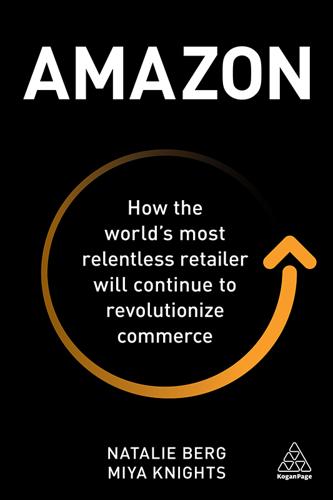
Amazon: How the World’s Most Relentless Retailer Will Continue to Revolutionize Commerce
by
Natalie Berg
and
Miya Knights
Published 28 Jan 2019
Spend: the average Prime member spends $2,486 – nearly five times more than non-members,16 according to Morgan Stanley. As with most subscriptions, members typically feel the need to get their money’s worth, which can lead to irrational decision making: in this case, shoppers justify the annual Prime fee by spending more with Amazon. The sunk cost fallacy works to Amazon’s advantage. Frequency: according to Consumer Intelligence Research Partners, Prime customers shop with Amazon nearly twice as often (25 times per year) as non-Prime members, making Bezos’ initial vision – using Prime as a tool to remove barriers to more frequent shopping – a reality.17 Retention: it is estimated that retention rates are higher than 90 per cent.18 Through Prime, Amazon also gets access to a treasure trove of customer data, giving them an unrivalled understanding of the online purchasing behaviour of their most important shoppers.

The Quiet Damage: QAnon and the Destruction of the American Family
by
Jesselyn Cook
Published 22 Jul 2024
They knew he was compulsively gambling again; he was so nervous about affording his rent that he was considering temporarily moving in with Jessica over in D.C. But they were also troubled by how deeply he was pouring himself into this seemingly futile quest to pull their mother back to reality. So was Adam. QAnon had taken over not just her life, but his too. As with his gambling, he knew that he was being influenced to a degree by the sunk-cost fallacy: After all the time, energy, and emotion he’d invested, how could he quit now? It haunted him to think that a similar kind of cognitive dissonance could shackle Emily to her conspiracy theories indefinitely. She had sacrificed so much at the altar of Q: her reputation, her dignity, her family.

Building Microservices
by
Sam Newman
Published 25 Dec 2014
With ATOM, we now need to manage our own shared state among all the workers to try to reduce the chances of reproducing effort. If you already have a good, resilient message broker available to you, consider using it to handle publishing and subscribing to events. But if you don’t already have one, give ATOM a look, but be aware of the sunk-cost fallacy. If you find yourself wanting more and more of the support that a message broker gives you, at a certain point you might want to change your approach. In terms of what we actually send over these asynchronous protocols, the same considerations apply as with synchronous communication. If you are currently happy with encoding requests and responses using JSON, stick with it.
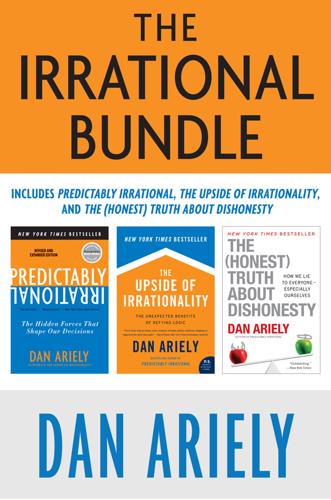
The Irrational Bundle
by
Dan Ariely
Published 3 Apr 2013
They never completely cease to influence me (this is something to keep in mind as you attempt to become a better decision maker). Third, after investing years of time and effort into making my hand function as best it can, living with the daily pain, and figuring out how to work with these limitations, I’m a victim of what we call the sunk cost fallacy. Looking back at all my efforts, I’m very reluctant to write them off and change my decision. A fourth reason is that, twenty-some years after the injury, I have been able to rationalize my choice somewhat. As I’ve noted, people are fantastic rationalizing machines, and in my case I have been able to tell myself many stories about why my decision was the right one.
…
ultimatum game and, 275–76 weak and strong, 136–37 wise men’s warnings against, 151 see also customer revenge risk taking, 188 Roll-up game, 24, 34 romantic relationships: canoeing and, 278–79 emotional cascades and, 277–78 resilience to breakup of, 172–73 see also assortative mating; dating Roosevelt, Franklin Delano, 295 Rwanda, genocide in, 238, 253, 255 S SAP accounting software, 54, 77 SAT scores, scores on practice tests vs., 42 Schelling, Thomas, 246 Schkade, David, 175–76 Schmalensee, Dick, 259–60 Schweitzer, Albert, 151 scientific research, preference for one’s own ideas in, 117 Scitovsky, Tibor, 188 SeekaTreat, 59–60 self-herding, 262–64, 276 negative emotions as input for, 263–64 specific and general versions of, 271–74 ultimatum game and, 270–74 self-made goods, attachment to, see IKEA effect senses, adaptive ability of, 158–60 “Sensuous Chocolate Truffles,” Sandra Lee’s recipe for, 87–88 serendipity, enjoyment heightened by, 188 “70/30 Semi-Homemade® Philosophy,” 87–88 Shapiro, Laura, 86 Shaw, Scott, 238 shoes, designing your own, 95, 96 Shore, Zachary, 117 short-term enjoyments, long-term objectives vs., 4–5 Shrek, 154 Simon game, 23, 24, 34 Sinclair, Upton, 38 Singer, Peter, 242n Sisyphus, myth of, 69 Skinner box, 60–62 Slovic, Paul, 239–41, 246–48 Small, Deborah, 239–41, 246–48 Smith, Adam, 77–78, 79 sneakers, designing your own, 95 social contract, 128 social hierarchy, see assortative mating social loans, 234 social pressure, 42–46 anticipatory anxiety and, 45 cockroach experiment and, 45–46 public speaking and, 42–43 “Some National Stupidities” (Twain), 107–8 Something from the Oven (Shapiro), 86 Sony, 120–21 sour grapes theory, 198–99, 200, 201, 203 speed dating: in experiment on assortative mating and adaptation, 205–10 for older adults, 229 standard process of, 206–7 virtual dating and, 226–27 Spiller, Stephen, 109–10, 303–4 Spock-like state of mind, 231, 246, 247, 248 Stalin, Joseph, 238–39 Stanford University, 37 state of flow, 49 statistical victims, apathy toward plight of, 238–41, 242, 246, 247–49, 252–53 status quo bias, 285, 286 Stills, Stephen, 197, 211–12 stress, 38, 43, 50 bonus situations and, 31, 32–33, 36, 47, 51 “clutch” abilities and, 39–41 loss aversion and, 32–33 striatum, 126 Stringer, Sir Howard, 120 sunk cost fallacy, 287 Surowiecki, James, 120 “survivor” rhetoric, 241–42 Szent-Györgi, Albert, 248–49 T Talmud, 255 Taylor, Frederick Winslow, 78–79 technological development: division and meaning of labor and, 79–80 mismatch between evolution and speed of, 8–9 Teresa, Mother, 239 Tesla, Nikola, 117 texting, 7–8 while driving, 6, 7, 8 tickling oneself, 188 Tierney, John, 110 time, passage of: hedonic adaptation and, 171–74 transience of emotions and, 257, 261, 270 vengeful feelings and, 151, 153 TiVo, 181n Tomasello, Michael, 127 tooth drilling, adaptation to pain and, 161–62 transient experiences, happiness derived from, 187–88 trust, 127–29, 153 rebuilding of, neglected in wake of financial meltdown of 2008, 131 trust game, 125–26, 127 bailout plan from perspective of, 130 tuberculosis, 250, 251 TV commercials, 181n Tversky, Amos, 32n Twain, Mark, 107–8, 116, 151 U ultimatum game, 265–77 after dissipation of original emotions, 270–71 gender differences and, 275–76 incidental emotions introduced into, 268–70 with participants in role of senders, 271–74 rational economics and, 266, 267 United Nations (UN), 255 University of Massachusetts Medical School, 152 unpredictability, enjoyment heightened by, 188 V vacuum cleaner sounds, adaptation to, 177–79 vagueness, empathy and, 244 Vanderbilt, Cornelius, 154 Viégas, Fernanda, 225 virtual dating, 225–30, 231 explanations for success of, 227–30 speed-dating event and, 226–27 visual system, adaptive ability of, 159 vividness, empathy and, 243n, 244, 245, 254 W Wachtel, Claire, 65 Wall Street implosion of 2008, see financial meltdown of 2008 Waxman, Henry, 128–29 Wealth of Nations, The (Smith), 77–78 Weckler, Walter, 151 Weiner, Ina, 168–69 Weisberg, Ron, 101 work, see labor world problems experiment, 109–16 World War II, 167 writing: blogging and, 65 deriving meaning from, 64–65 Y yentas (matchmakers), 213 Yerkes, Robert, 18–20, 22, 31, 47 Young, Jim, 201, 203 “Yours Is a Very Bad Hotel,” 140–41, 146 Z Zajonc, Robert, 45–46 THE (HONEST) TRUTH ABOUT DISHONESTY How We Lie to Everyone—Especially Ourselves DAN ARIELY Dedication To my teachers, collaborators, and students, for making research fun and exciting.
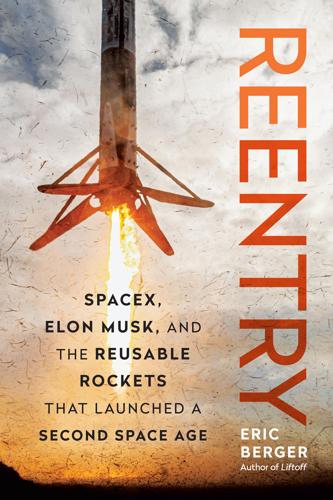
Reentry: SpaceX, Elon Musk, and the Reusable Rockets That Launched a Second Space Age
by
Eric Berger
Published 23 Sep 2024
In most other companies or government agencies, no senior manager wants to make difficult calls and be saddled with the consequences of failure. So they defer, studying a problem more or going through endless reviews and tests. Not Musk. He presses the “go” button. Sometimes the decision backfires spectacularly, but his willingness to accept the responsibility keeps things moving. And when things don’t work, there is no sunk cost fallacy. Even today, as part of the SpaceX employee performance review, one of the criteria is “responds positively to rapid changes in strategic direction.” Musk’s autocratic control of SpaceX, and willingness to pivot, allows employees to drop unnecessary burdens and move quickly in a new direction.

Virtual Competition
by
Ariel Ezrachi
and
Maurice E. Stucke
Published 30 Nov 2016
But self-learning algorithms and God View could make tacit collusion among more competitors likelier. The stability needed for tacit collusion is enhanced by the fact that computer algorithms, while not trusting, are unlikely to exhibit other human biases. Human biases can always be reflected in the programming code, but if some biases are minimized (such as loss aversion, the sunk cost fallacy, and framing effects), the algorithm acts consistently on more deliberative analysis, rather than intuition.14 Unlike humans, the computer does not fear detection and possible financial penalties or incarceration; nor does it respond in anger. The computer can quantify the payoffs that are likely achievable through cooperation in future games, and opt for forbearance rather than punishing small deviations.

Engineering Security
by
Peter Gutmann
Now charge them all $1,000 to read your next prediction. It’s not just the (coincidental) “winners” in this process that this will work on. There’s a bunch of psychological biases like confirmation bias (“he was right all the other times, it must have been just a fluke that this one was wrong”) and the endowment effect/sunk cost fallacy (“we’ve come this far, no turning back now”) that will ensure that even the losers will keep coming back for more, at least up to a point. It terms of return on investment it’s a great way to make a return from the stock market for very little money down, you’re merely offering no-strings-attached advice so it’s not fraud (although you’d have to come up with some better method of drawing punters than spamming them), and the people taking your advice probably aren’t that much worse off than with any other prediction method they might have chosen to use.
…
The way an Internet café works is that you pay for a block of time, typically in fixed 15- or 30-minute segments. Once your time is up, you’re forcibly logged off the entire machine, not just your Internet session. The endowment effect (see “Psychology” on page 125) combined with other phenomena like the sunk cost fallacy, which requires “getting your money’s worth” even if it doesn’t make much sense, means that people tend to use up their entire block of time once they’ve paid for it, even if it’s just by browsing random web sites. However some subset of people will leave before their time is up, and an even smaller subset of people will forget to log out when they leave in this manner.
…
This works fine for government departments, whose main priority is spending their allocated budgets and (if possible) expanding [117] but commercial entities have to return a profit to their owners or shareholders, making PKI a far more difficult proposition. In this case though it’s likely that the sunk cost fallacy, covered in “Psychology” on page 125, as well as the fact that it was funded by banks with accountability measures attached to the funding meaning that something had to be shown at the end of it, precluded applying this approach. Another peculiar aspect of this PKI is that the Norwegian banks tried to monetise the investment that they’d made in smart cards for banking authentication purposes by encouraging people to use the card for other services.

The Sullivanians: Sex, Psychotherapy, and the Wild Life of an American Commune
by
Alexander Stille
Published 19 Jun 2023
Michael Cohen and several other recent defectors also got together to bring a lawsuit to recover the money they had invested in the building at 100th Street and Broadway. They had purchased what they’d been told were ownership shares in the building. Now that they were not living there, they simply wanted their money back. Reflecting on how long it took him to leave the group, Paul later offered an idea from behavioral economics. “It’s like the ‘sunk cost fallacy,’” he wrote in a court affidavit. “Every year the cost of leaving got higher and higher because you have invested so much in it. It’s like the British and the French governments putting more and more money into the Concorde because they don’t want to walk away from all the money they’ve put into it even though it’s just going to keep on losing money.
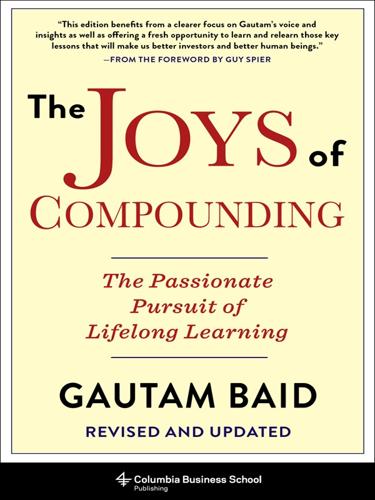
The Joys of Compounding: The Passionate Pursuit of Lifelong Learning, Revised and Updated
by
Gautam Baid
Published 1 Jun 2020
This bias causes us to remain consistent with prior commitments and ideas, even in the face of disconfirming evidence. This includes confirmation bias—that is, looking for evidence that confirms our beliefs and ignoring or distorting disconfirming evidence to reduce the stress from cognitive dissonance. We tend to double down on our failed efforts because of the sunk cost fallacy. The more time or money we spend on something, the less likely we are to abandon it. When we have made an investment, we tend to seek evidence to confirm that we made the right decision and to ignore information that shows we made the wrong one. As Buffett has said, “What the human being is best at doing is interpreting all new information so that their prior conclusions remain intact.”2 The more publicity a decision receives, the less likely it is that we will change it.
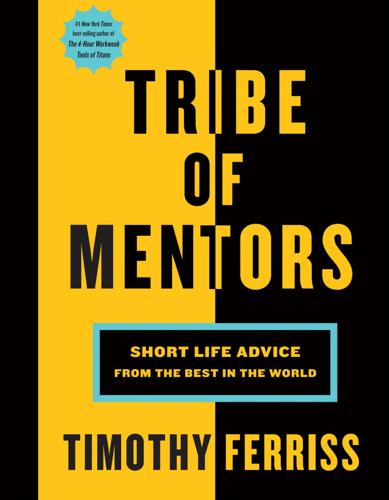
Tribe of Mentors: Short Life Advice From the Best in the World
by
Timothy Ferriss
Published 14 Jun 2017
A second piece of advice would be to seek out mentors constantly and without shame (and mentor others). This requires adhering to the above point, of course, but it highlights a vulnerability and asymmetry. Always be a student and always be a teacher. As for advice to ignore: Too often, I hear people effectively given advice that is consistent with sunk cost fallacies. I certainly heard it a lot. “You’ve spent X years learning Y, you can’t just up and leave and now do Z,” they say. I think this is flawed advice because it weighs too heavily the time behind you, which can’t be changed, and largely discounts the time in front of you, which is completely malleable.
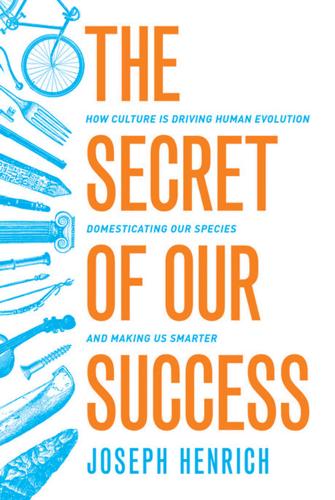
The Secret of Our Success: How Culture Is Driving Human Evolution, Domesticating Our Species, and Making Us Smarter
by
Joseph Henrich
Published 27 Oct 2015
In many contexts, but not all, we humans make systemic logical errors, see illusory correlations, misattribute causal forces to random processes, and give equal weight to small and large samples. Not only do humans often fall systematically short of these standard benchmarks, we actually often don’t do appreciably better than other species—like birds, bees, and rodents—on these tests. Sometimes, we do worse.22 We, for example, suffer from the Gambler’s fallacy, Concorde (or sunk cost) fallacy and Hot-hand fallacy, among others. Gamblers believe they are “due” at the craps tables (they’re not), movie goers continue watching painfully bad movies even if they know they’d have more fun doing something else (e.g., sleeping), and basketball betters see certain players get the “hot-hand,” even when they are actually seeing lucky streaks that are consistent with the player’s typical scoring percentage.

Rationality: From AI to Zombies
by
Eliezer Yudkowsky
Published 11 Mar 2015
Most people answer this kind of question by thinking about whether “shy” matches their stereotypes of those professions. They fail to take into consideration how much more common salespeople are than librarians—seventy-five times as common, in the United States.9 Other examples of biases include duration neglect (evaluating experiences without regard to how long they lasted), the sunk cost fallacy (feeling committed to things you’ve spent resources on in the past, when you should be cutting your losses and moving on), and confirmation bias (giving more weight to evidence that confirms what we already believe).10,11 Knowing about a bias, however, is rarely enough to protect you from it.
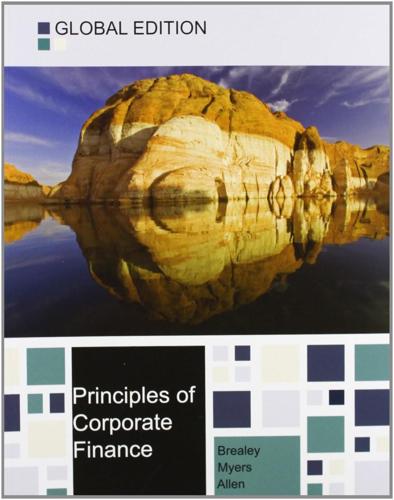
Principles of Corporate Finance
by
Richard A. Brealey
,
Stewart C. Myers
and
Franklin Allen
Published 15 Feb 2014
As Congress debated whether to cancel the program, supporters of the project argued that it would be foolish to abandon a project on which so much had already been spent. Others countered that it would be even more foolish to continue with a project that had proved so costly. Both groups were guilty of the sunk-cost fallacy; the money that had already been spent by NASA was irrecoverable and, therefore, irrelevant to the decision to terminate the project. Beware of Allocated Overhead Costs We have already mentioned that the accountant’s objective is not always the same as the investment analyst’s. A case in point is the allocation of overhead costs.